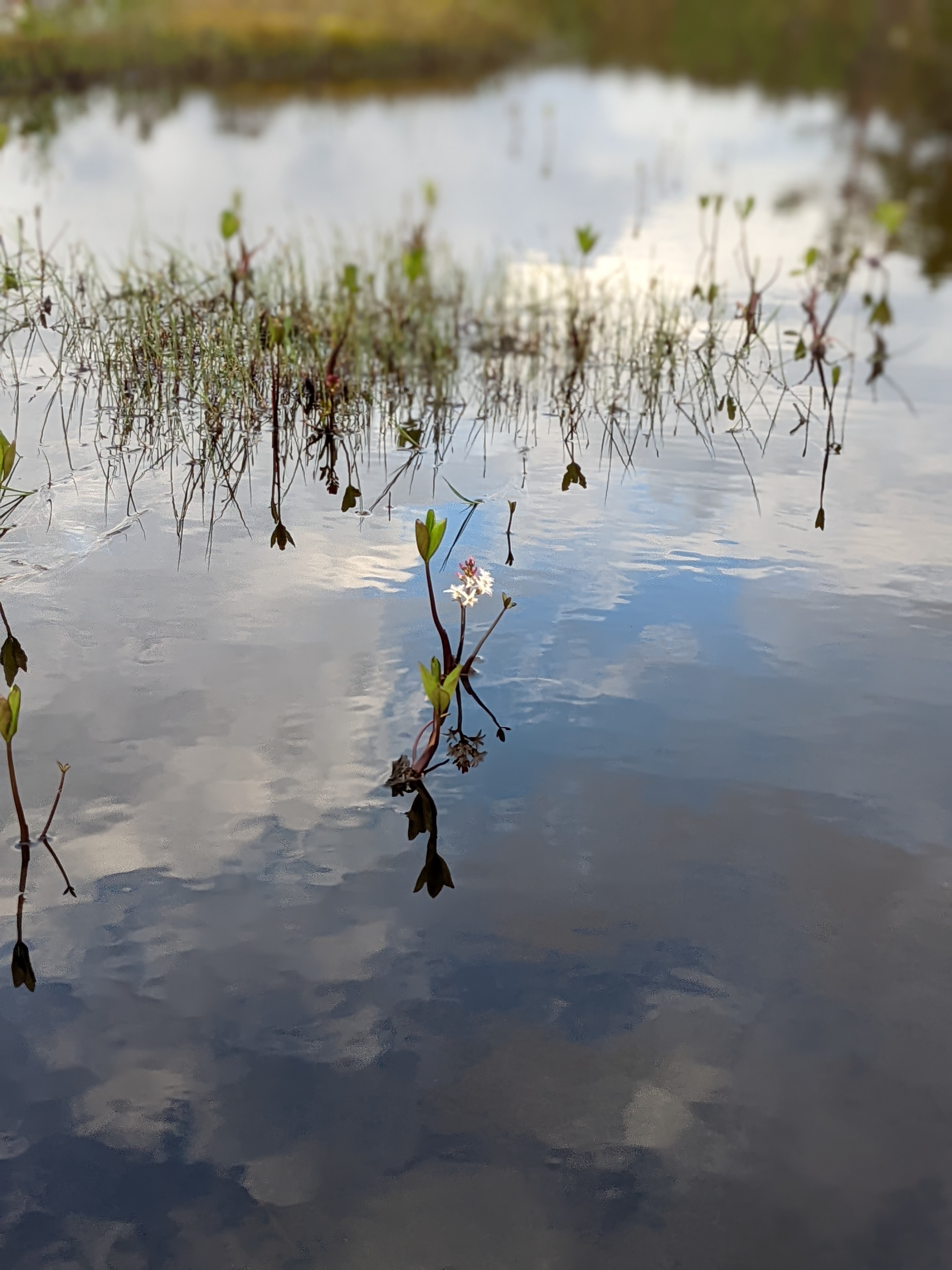On Senja
The stock description of Senja is “all of Norway in one little island”, and the stock description bears out pretty well. A lovely mix of coastal birch and pine forest, hilly farm country, and wild alpine spires, it’s a beautiful place.

The road in
After crossing the bridge to Senja, we quickly escaped Silsand, the scruffy little suburban town that first greeted us. We were headed for Ånderdalen National Park (“The valley of spirits”, maybe?), and had to make tracks if we were going to stay in the Ånderbu hut 7km into the park.

At our navigation app’s suggestion, we took a lovely, quiet road along the river instead of following the 860. The river roads here are always quietly shocking to us, as Americans. Salmon season is on, but the rivers are still quiet. Every elegible fishing pool has its own little shelter, complete with fire ring or grill. Some stretches of river have two or three of them. The fishing regs for the area are posted (at length), and the quotas are often shockingly high, especially for things that aren’t salmon. The annual limit for arctic char here? 200 fish.
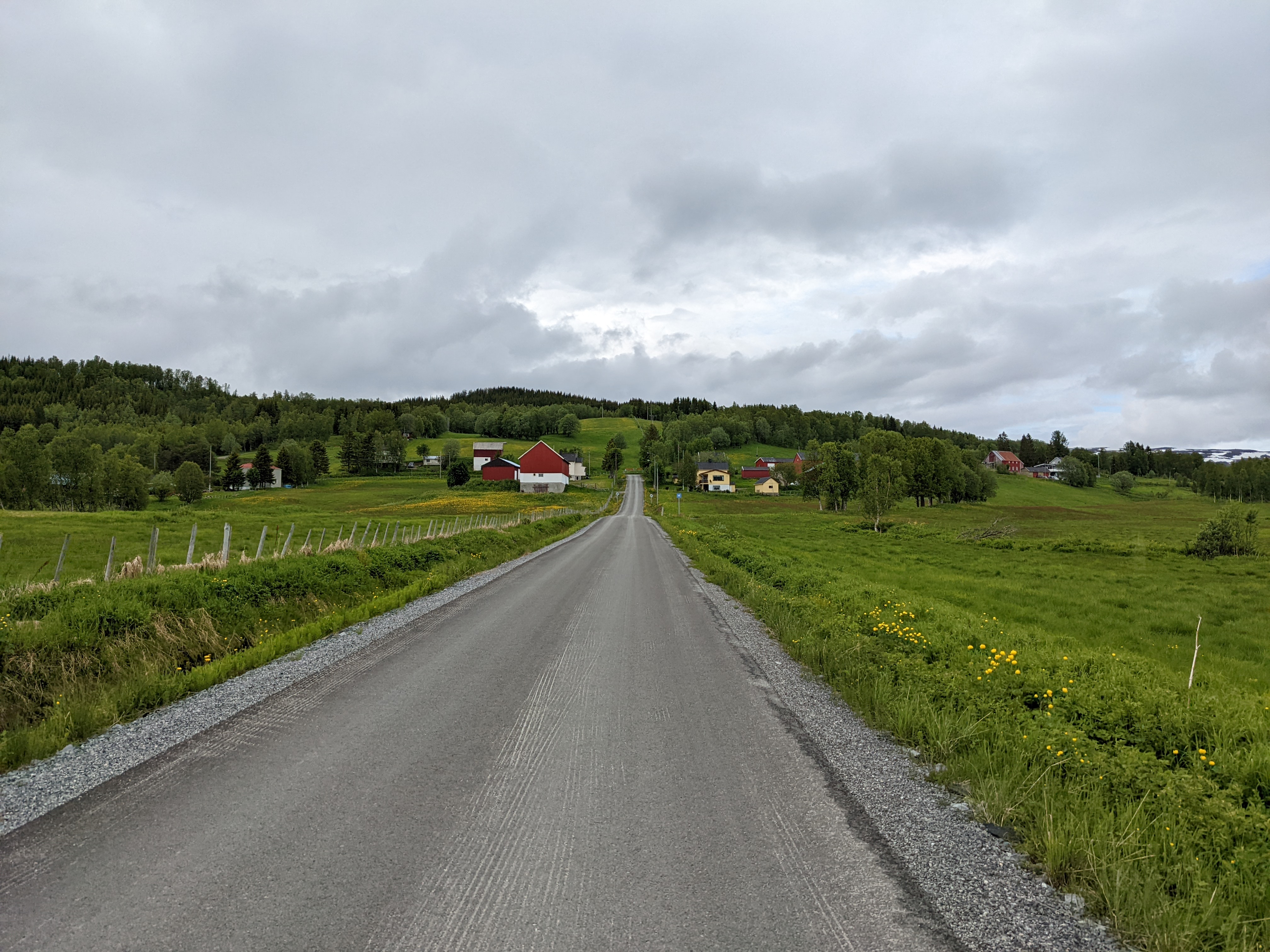
We both overlooked the turnoff onto some tiny nonexistent side road, so we went a little farther than our legs wanted to carry us, over hills we probably could have avoided on the longer, larger road. Campervans are here in force, as in most of the country we’ve seen west of Nordkapp, and camper-van camp sites pop up now and then like clusters of weird mushrooms on the landscape. The route was mostly great, though, and the countryside was a real improvement over the coastal suburbs near the bridge. Though a bit buggy, the farm land near the top of the hill is pretty enough to make you want to trade your fancy toys for a quieter, harder-working life.
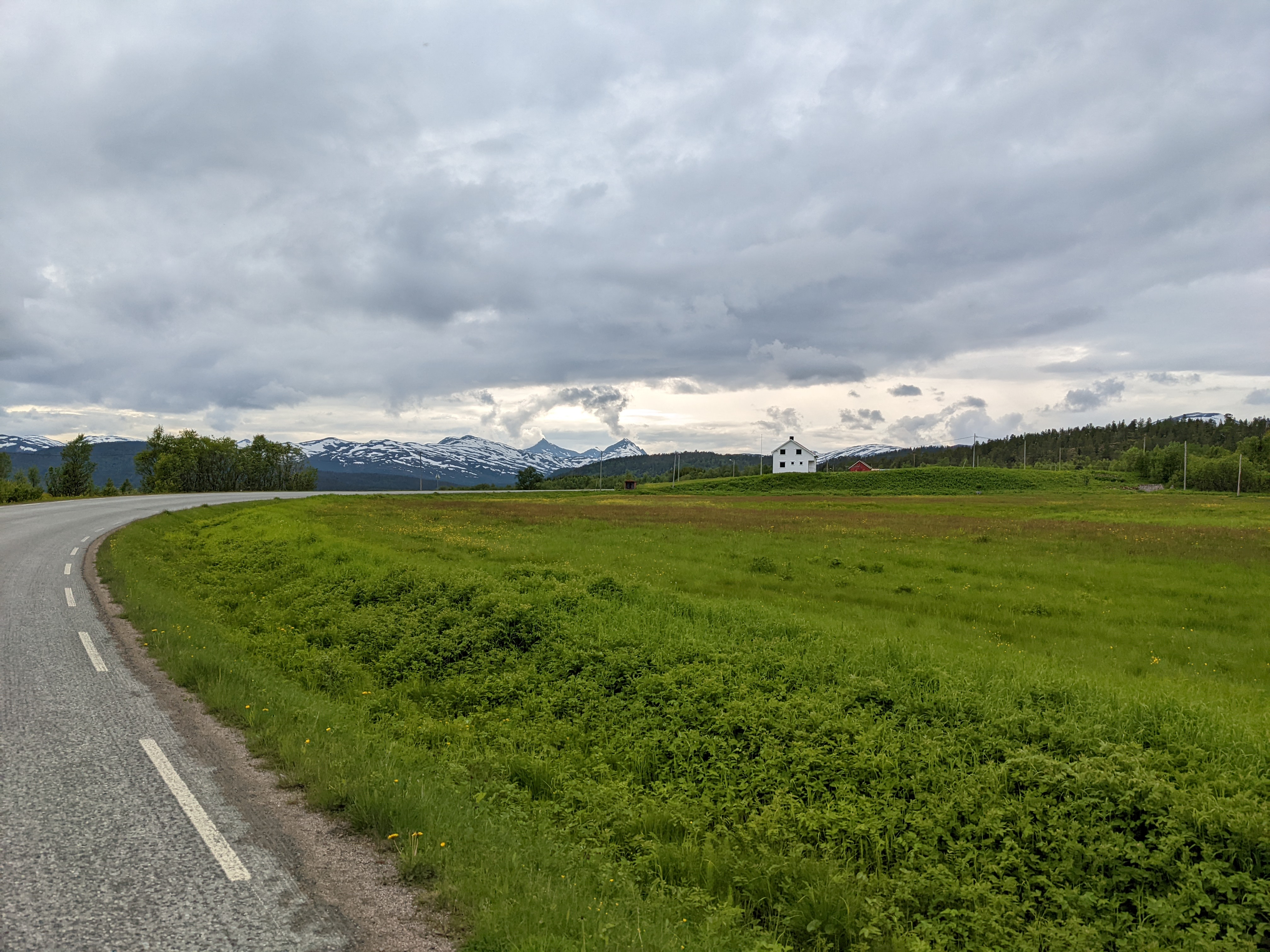
As we rolled back downhill toward the coast, snowy peaks reappeared in the west.
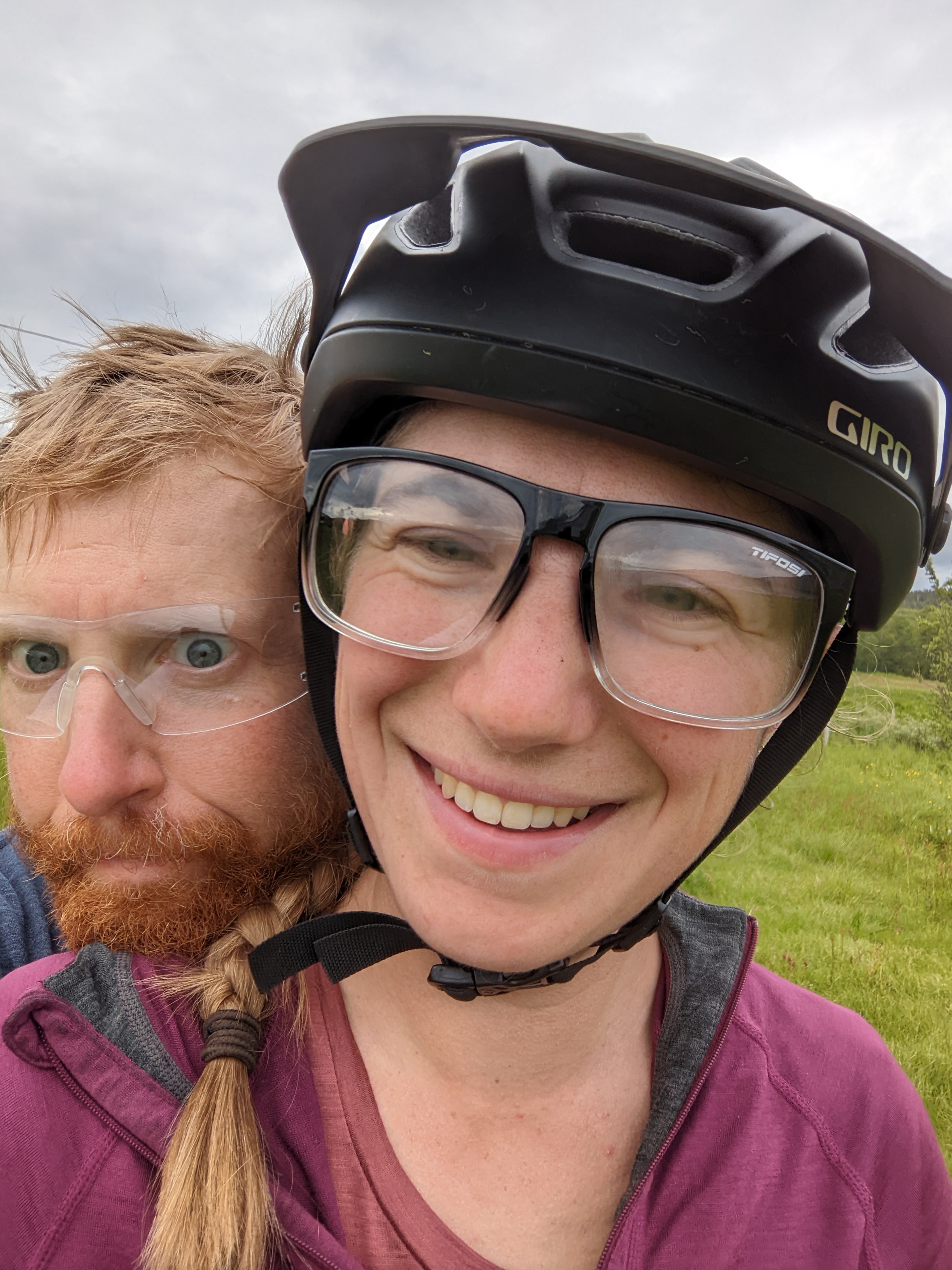
We were getting tired, but the weather had stayed mostly dry, and spirits were high.

It’s green here, and dandelion is solidly in season.
Ånderdalen and Ånderbu
After a quick-change session and a big fat snack at the park entrance picnic table, we rode into Ånderdalen. There’s a beautiful 2km walking path separating the lot from the park proper, and it felt liberating if a little uncomfortable at first, to pedal our bikes into the wild country.

Based on our conversations along the way, though, bikes seem AOK on this access trail. There are little grill stops and wind shelters along the way, and it’s a beautiful and homey trail. We stashed our bikes and extra bags near the national park boundary, and set off into the hills on foot.
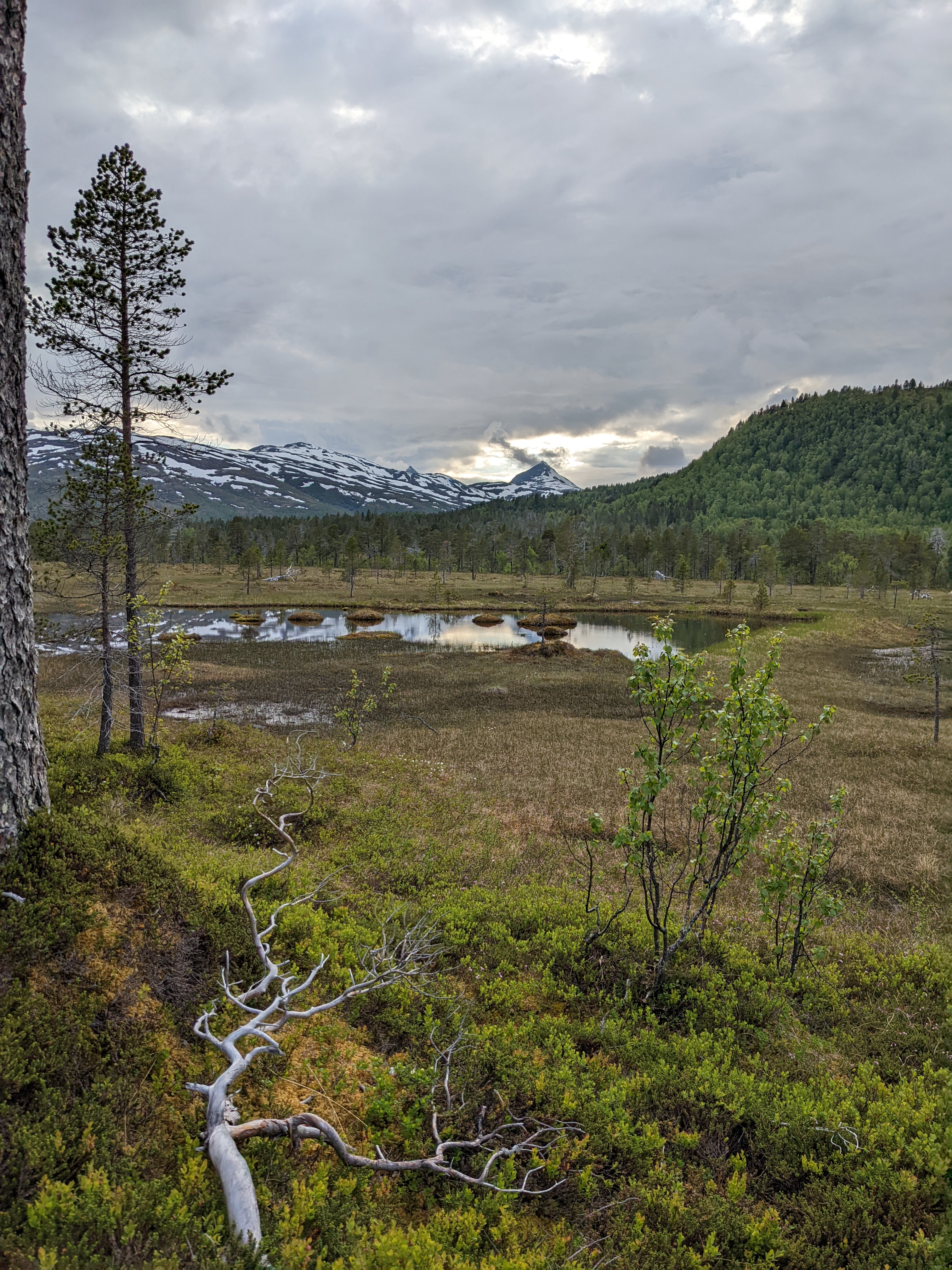
We passed happy-looking cloudberry flowers, and rich gardens of ferns. There are a couple of beautiful little picnic areas along the way, too. I read somewhere that the purpose of Norway’s national parks isn’t to facilitate human interaction with nature, as you see in the US, but rather to protect important landscapes, practices, and ecological communities. The limited interpretive signage in the parks we’ve visited so far bears this out, but the hut system, wind breaks, and grill spots tell a different story. Maybe the primary purpose is preservation, but joy and comfort in nature seem also to be well-supported here.
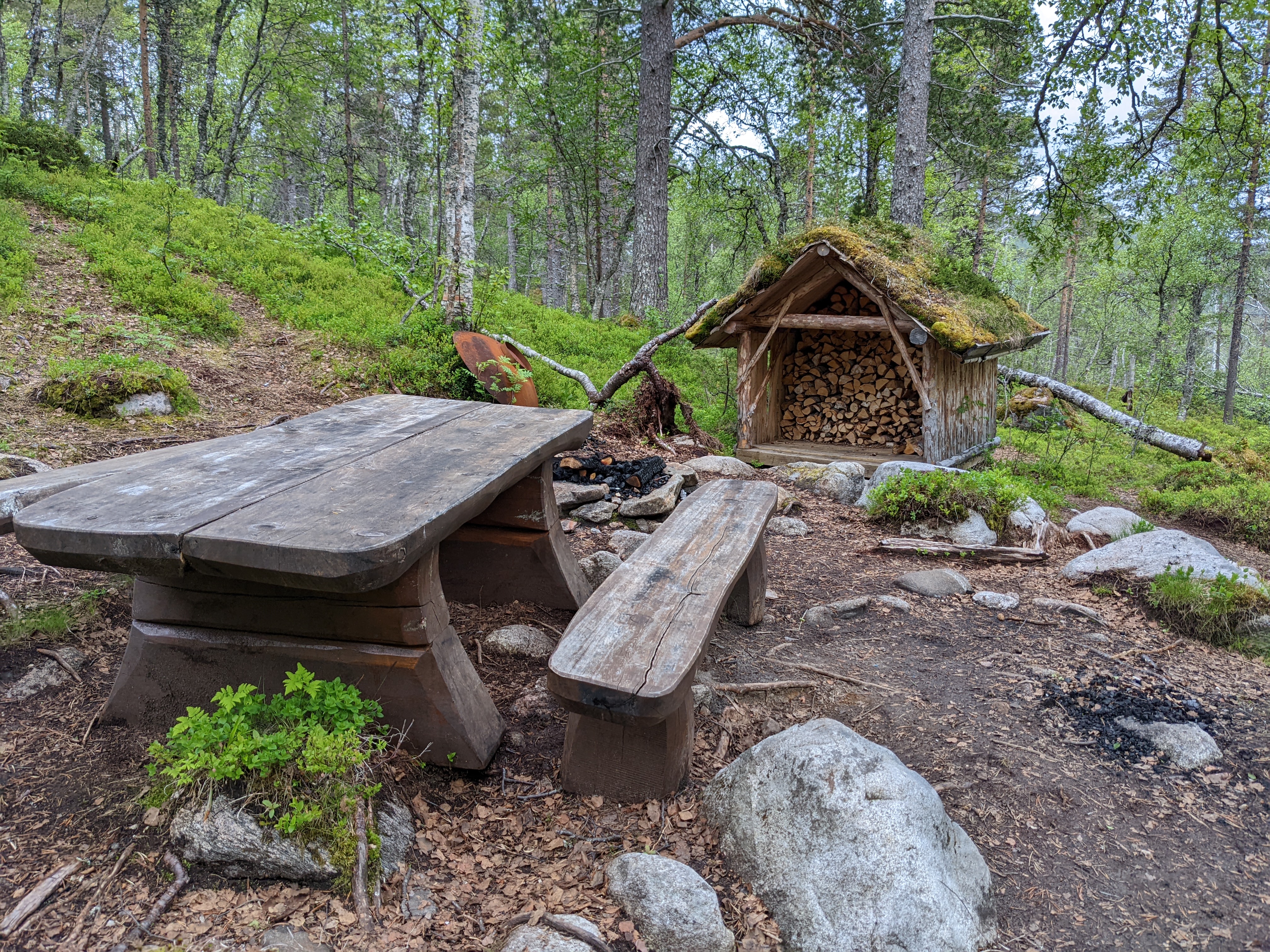
The hike to the hut is about 7km in total, including the access trail. Though not as consistently wet as the approach to Dividalshytta, the trail spends plenty of time crossing marshland. The boardwalks are lovely, and there are a few stretches of tenuous rock-hopping for good measure. After a day of cycling, I felt every inch of the walk.

Ånderbu is a bright, beautiful little statskog cabin, perched on the bank of Åndervatnet. We arrived just in time to wait out a little rain squall inside, and I was so relieved to find the place empty when we got there. These cabins are available on a first-come-first-serve basis. About 1 km farther along the lake there’s a gappahuk (a traditional Saami earthen shelter) which we had considered as a backup. I would love to sleep in one, but we were both so tired, and that cabin was just too perfect.
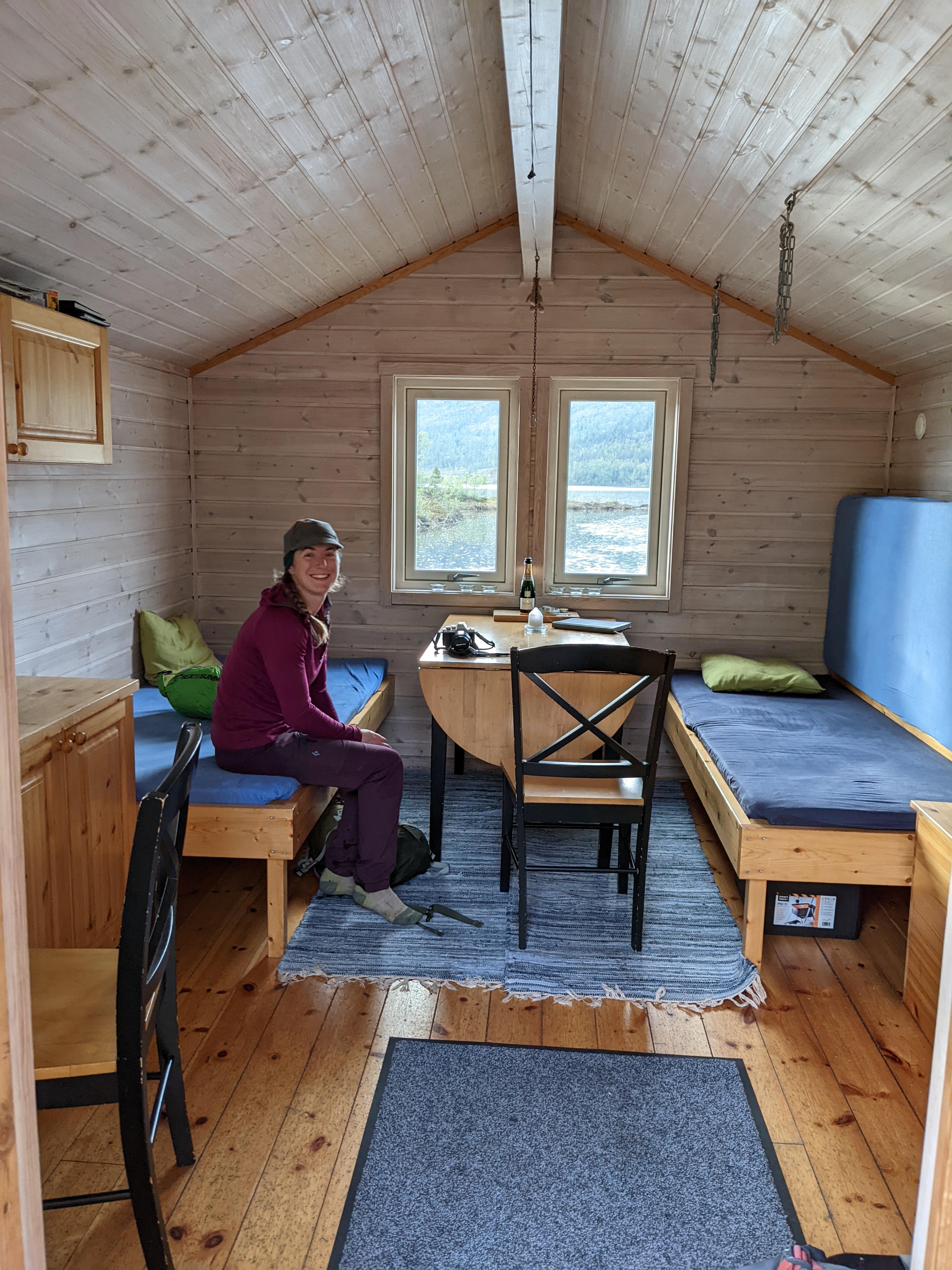
While the rain fell, we fired up the propane stove and made some absolutely delicious spicy zoo-animal pasta. The thought of two small people eating a full half-kilo of giraffes and elephants is still a little shocking to me, but we had no trouble at all putting them away.
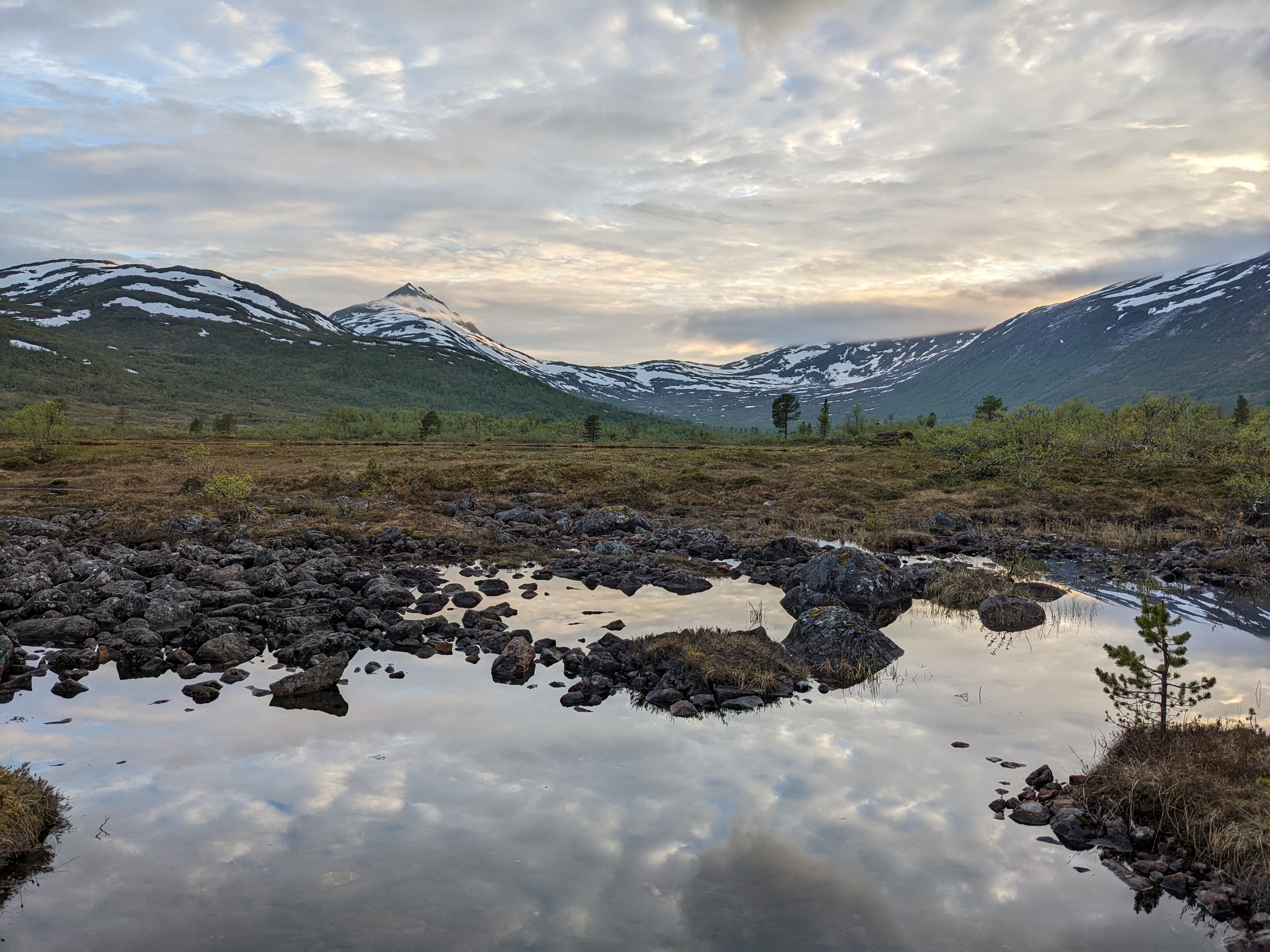
Would we recommend a visit to Ånderdalen National Park? In a heartbeat.
To the Hyttekroa
We went for a little hike in the morning, reluctant to let the place go.
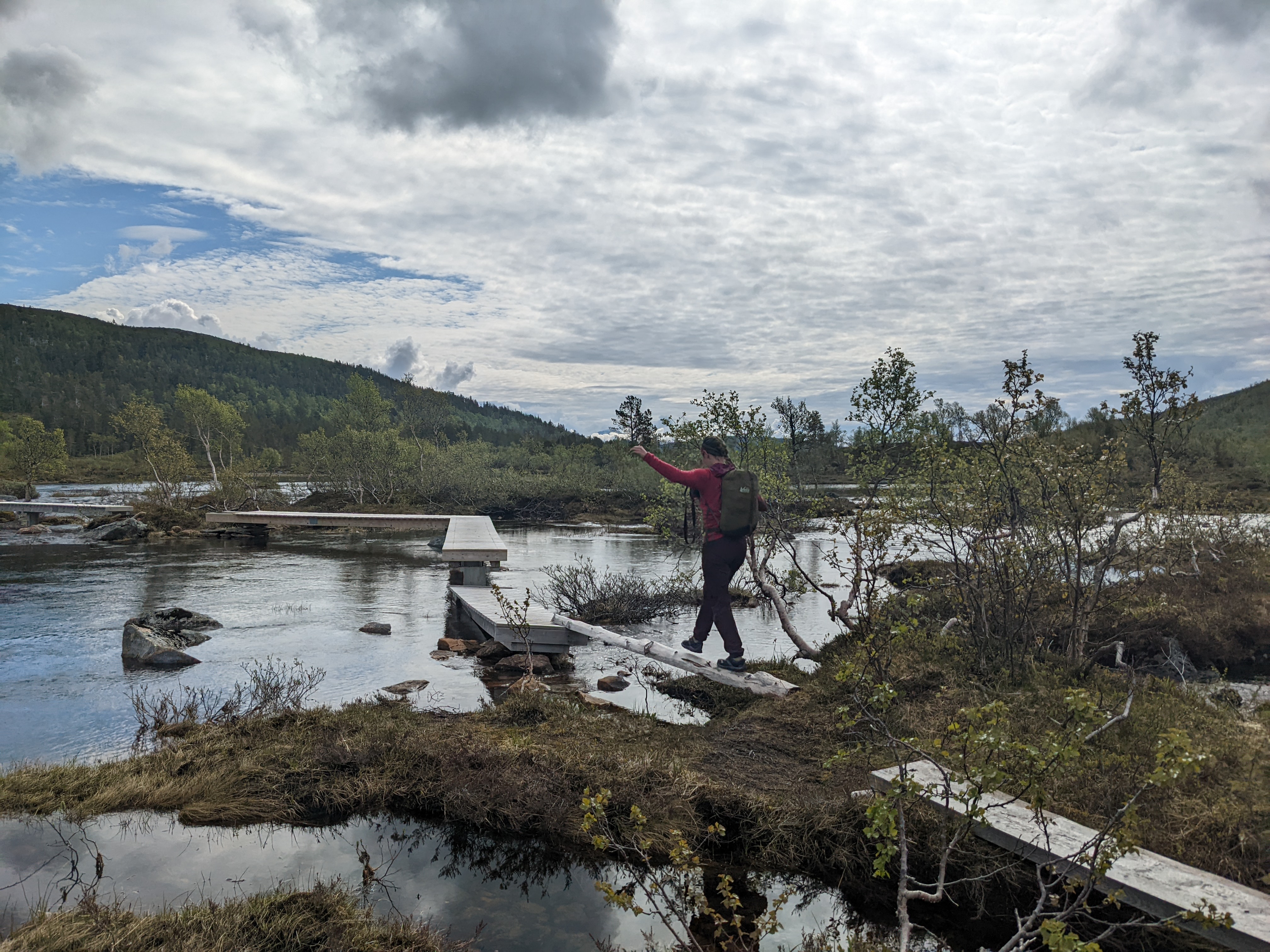
The trail out still felt like a challenge, despite walking mostly downhill.
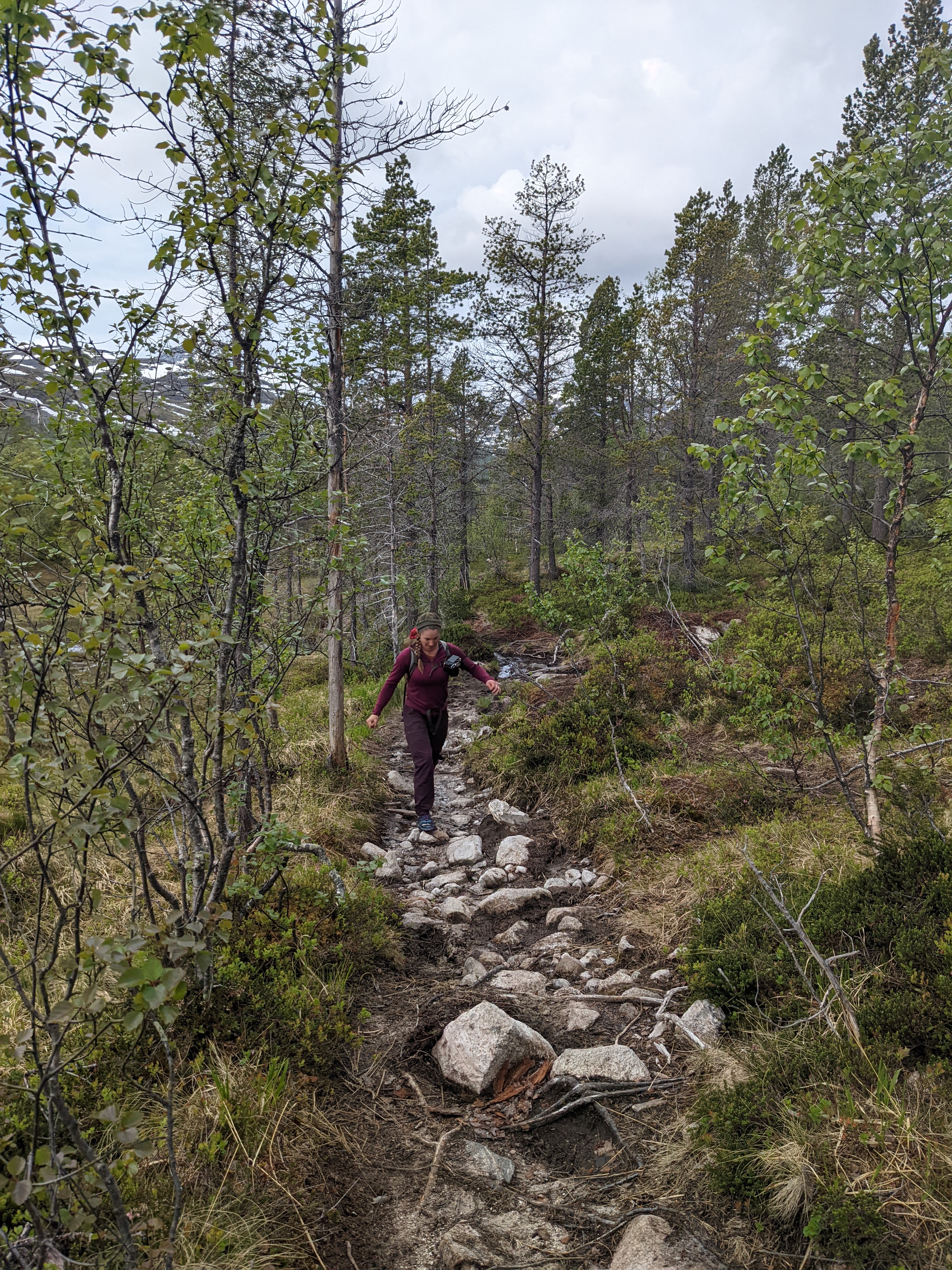
Jill and Richard recommended the cinnamon buns from the bakery in Å, Lofoten. [EDIT: Our eternal thanks to them. The cinnamon buns were good, and the 100% rye was even better.]
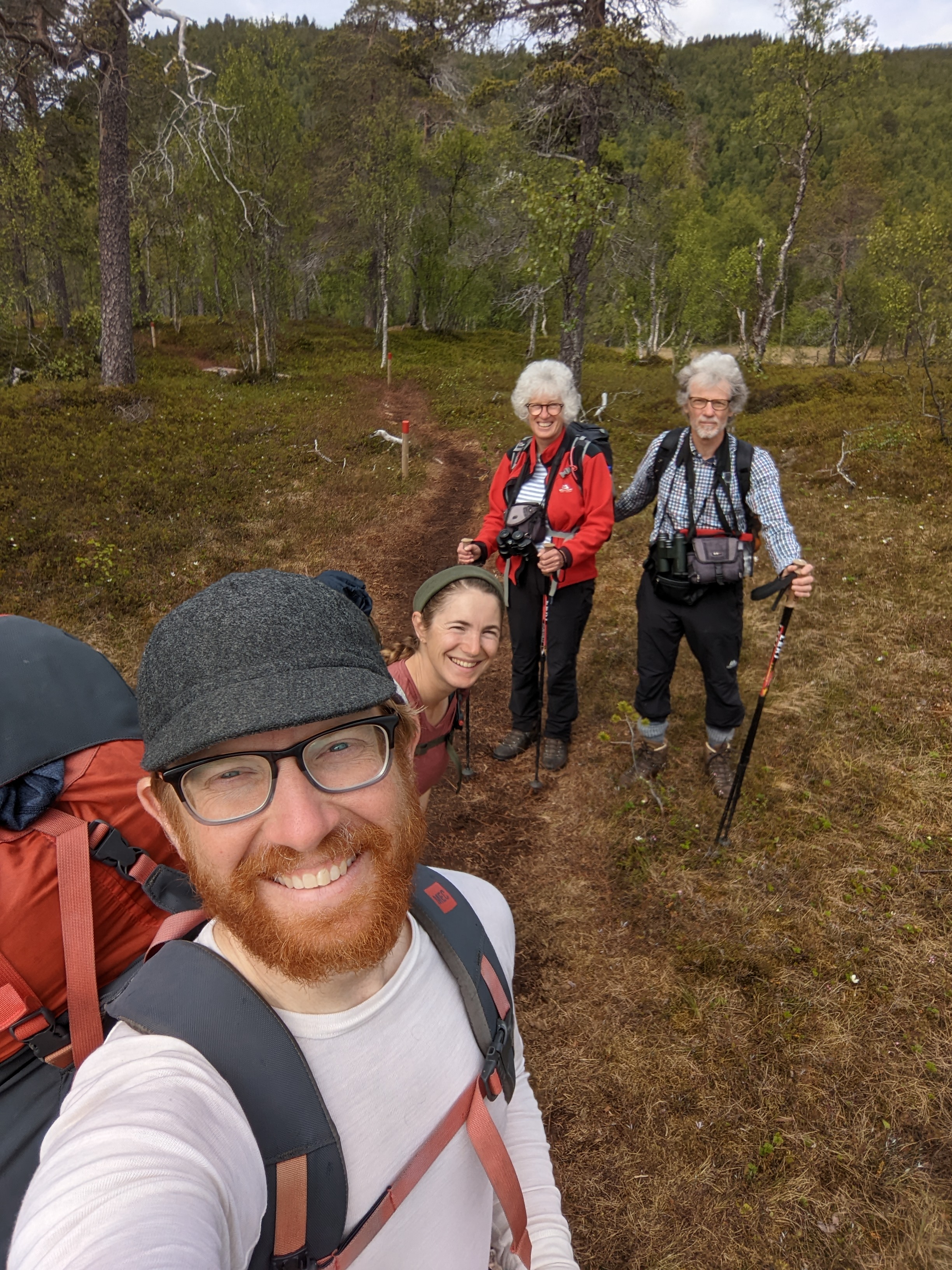
We took a short hike up to yet another contemporary-architecture grill spot, wrestled the luggage into shape, and soon we were wheeling down the gravel to the Hyttekroa (a cabin restaurant-thing) back at the main road.
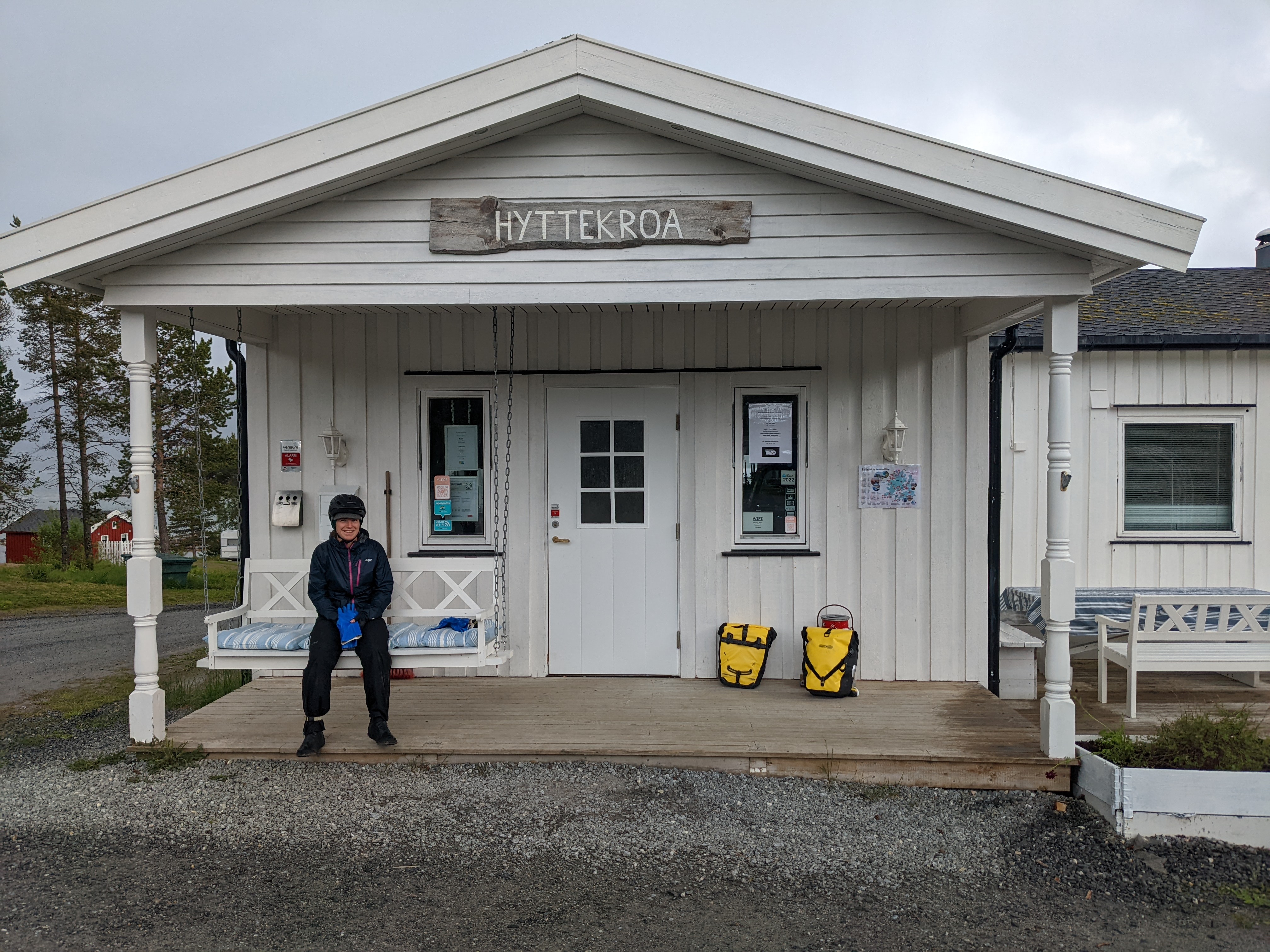
A rain storm and up and over the pass
There was rain in the near-term forecast, all of our battery-powered things were hungry, I had relocation paperwork to deal with for the new job, and hot lunch in a warm dry place sounded like a very appealing way of solving all the problems. The fish soup was locally-sourced and house-made, and very, very good. Even better, the staff was willing to let us camp in their restaurant for hours while we waited for the rain to pass.
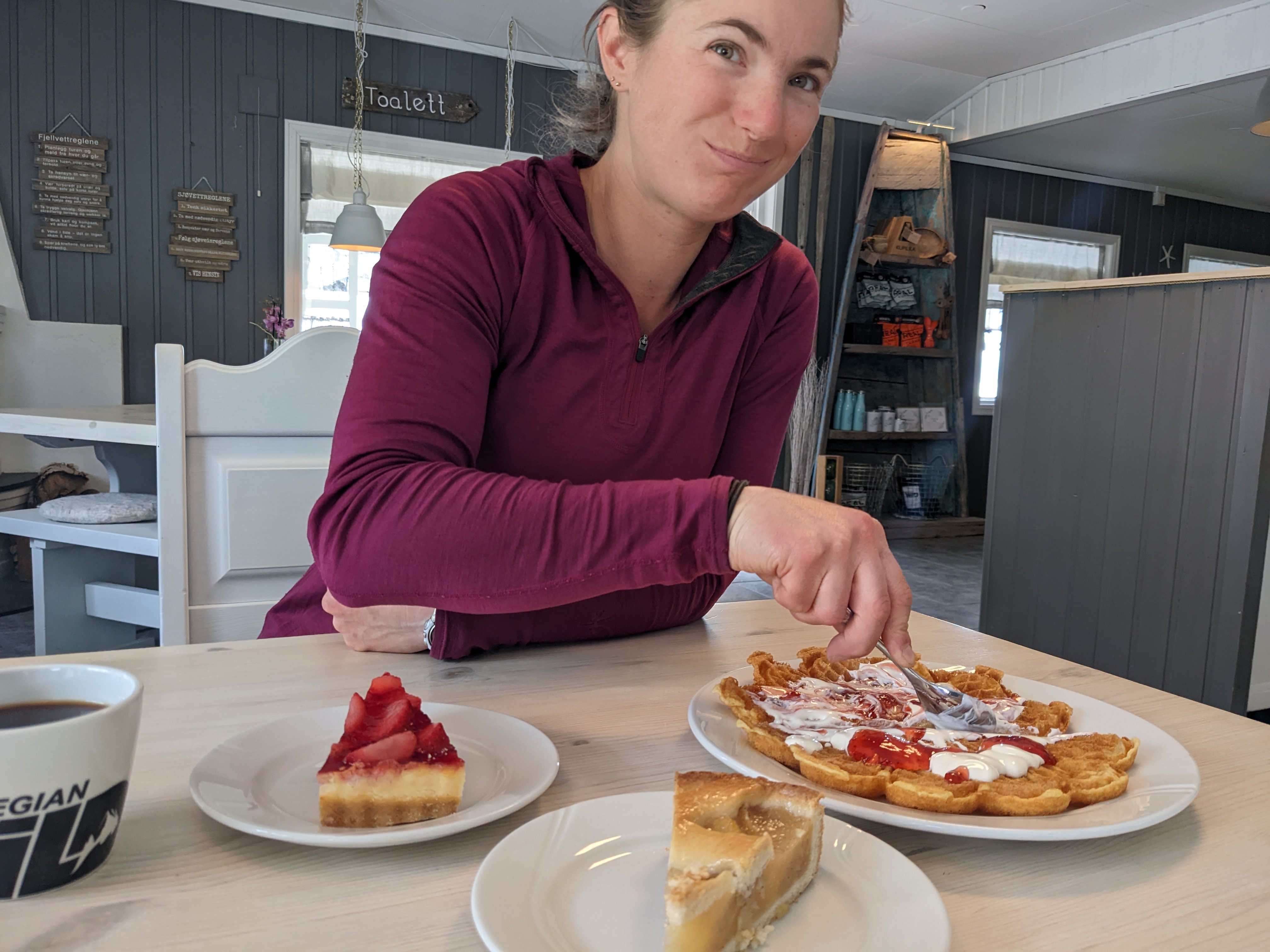
As soon as we were sure the rain was past us, we threw our things together and hit the road. Two minutes later, the sky opened up, hitting us with the best downpour we’ve seen so far. Oh, Norway.

Senja’s north coast is dense with short, steep-sided fjords - shark teeth bared to the sky. We had planned a counterclockwise circut of most of the island, with hikes up into the gumline along the way. A tunnel closure on the headland east of Senjahopen barred that path, so we rode the beautiful 86 across the heart of the island, and decided to bike out as far as we could the next day, unloaded.
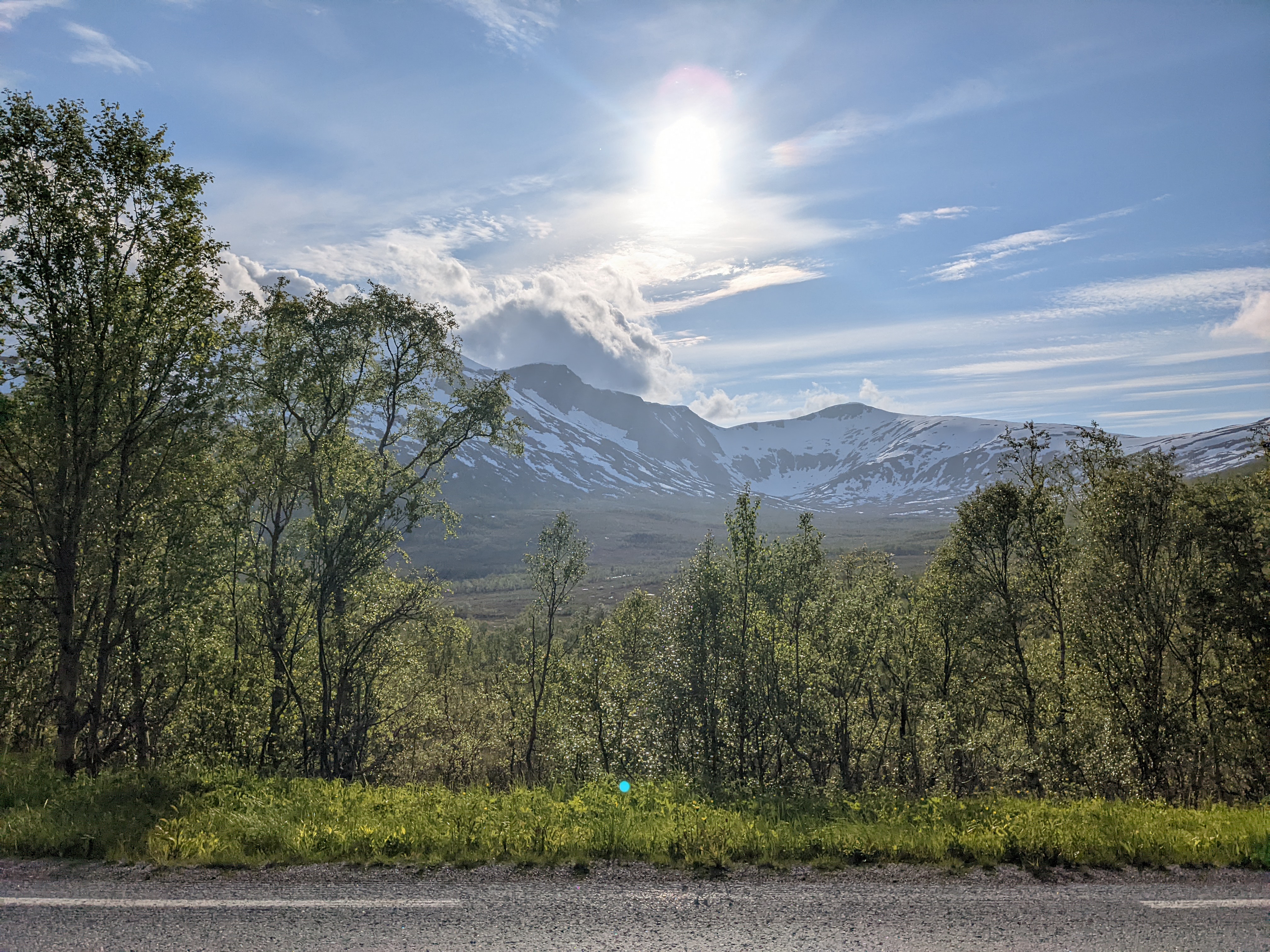
The road runs along a river valley, backed by high white peaks. Cabins stand here and there along the banks, tiny, lonely and peaceful. The feeling of the place left me ragged inside - the desire to live in a place like this is strong. The remoteness is so hard, though, and some of the realities of the place are difficult. Despite the fact that I didn’t start hunting my own meat until after I turned 30, it’s hard for me to imagine living so remotely without hunting as a part of the experience, and Norway has so few large game animals. There are probably plenty of moose here, but there’s something that feels hollow to me about a place this wild without bears. I wonder whether I would feel the same way about wolves, if I had grown up with them.
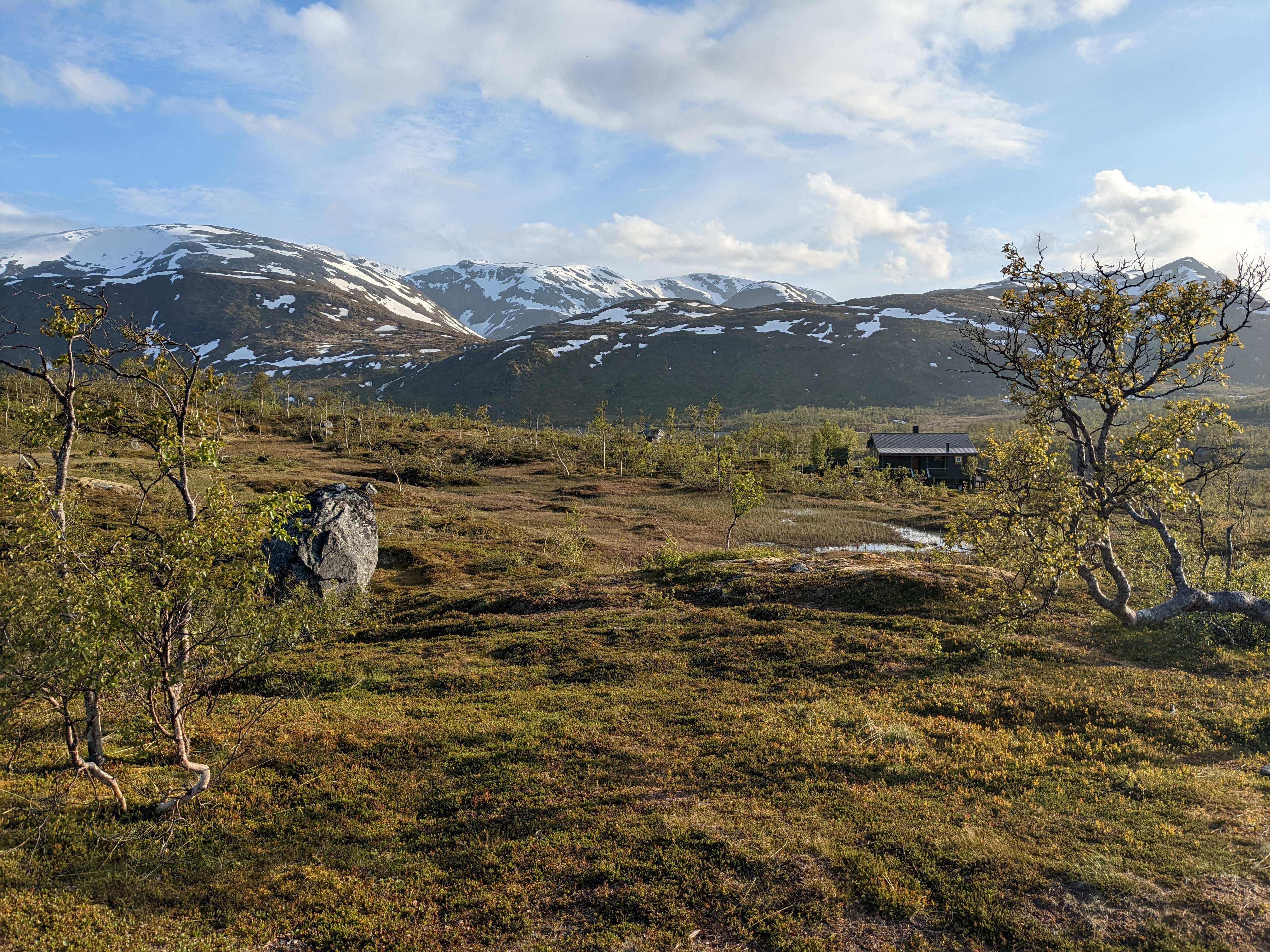
Around dinner time, we discovered that the Senjabu hut where we had hoped to stay was closed. (temporarily? permanently?) The plateau above the closed hut was gorgeous, but the locals apparently thought so too. We gave them their space, and crossed the road to find a camp site for the night.
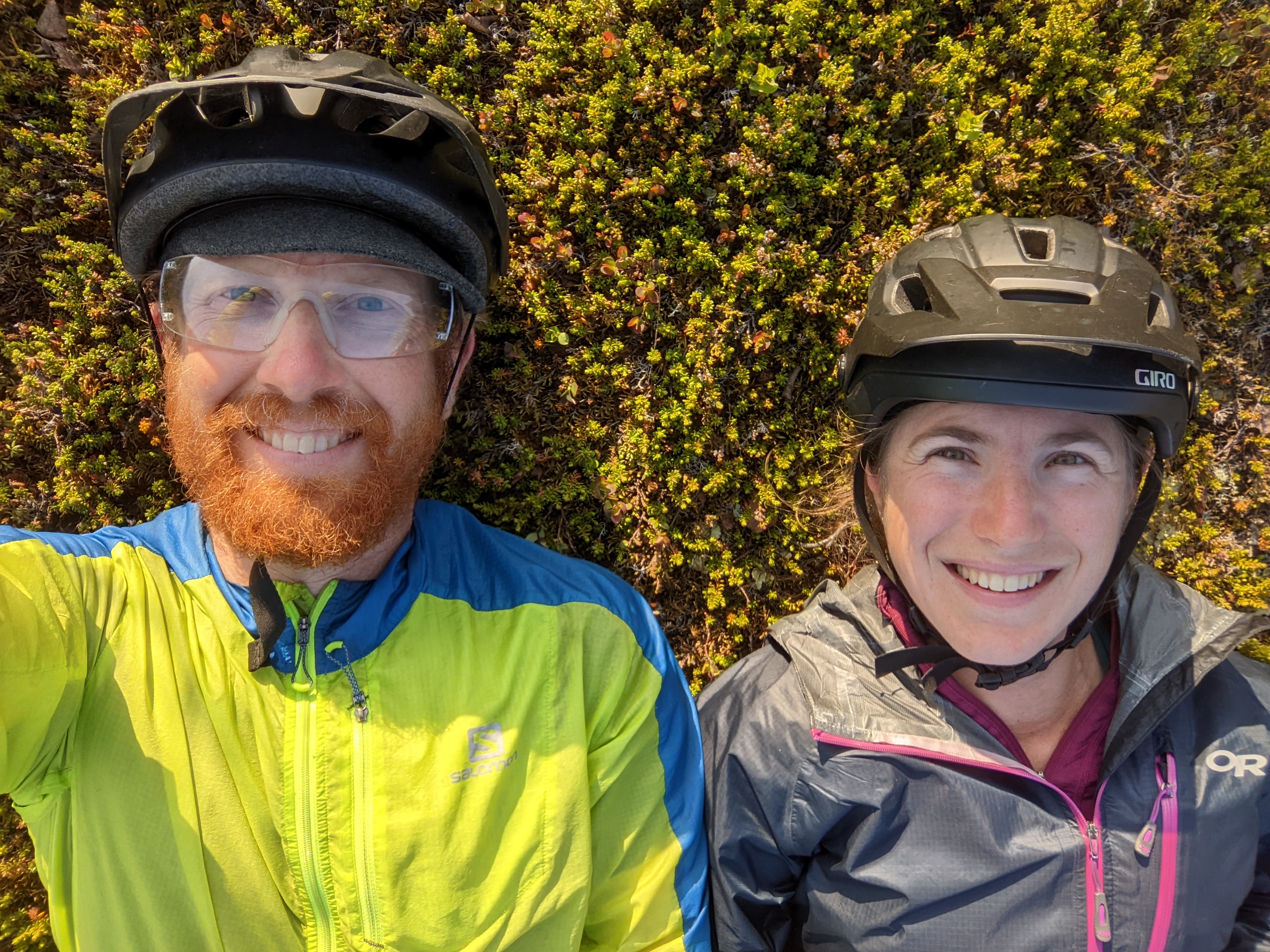
A little active scouting proved the grassy patch flatter and dryer than the crowberry patch, so we settled down on a lovely little island in perhaps the sweetest sleeping swamp of the trip.
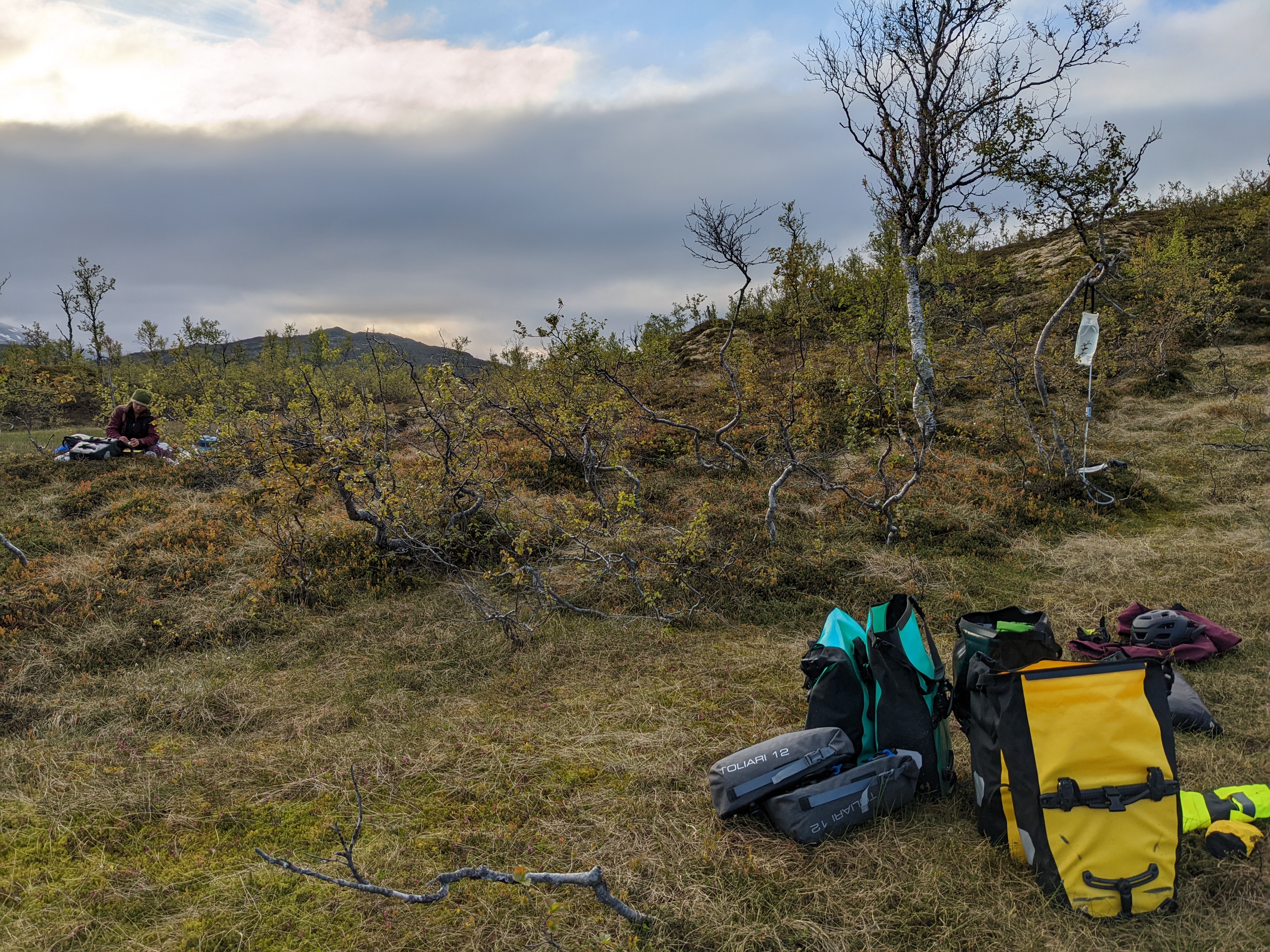
Super speedy day trip to the pointy peaks of Northern Senja
Morning came cloudy, and set us on the road. We met Gunnar, a towering Norwegian chess-wizard, at the roadside. He espouses the drinking of water directly from streams in Norway, and offered us a place to stay in Oslo. Super sweet.
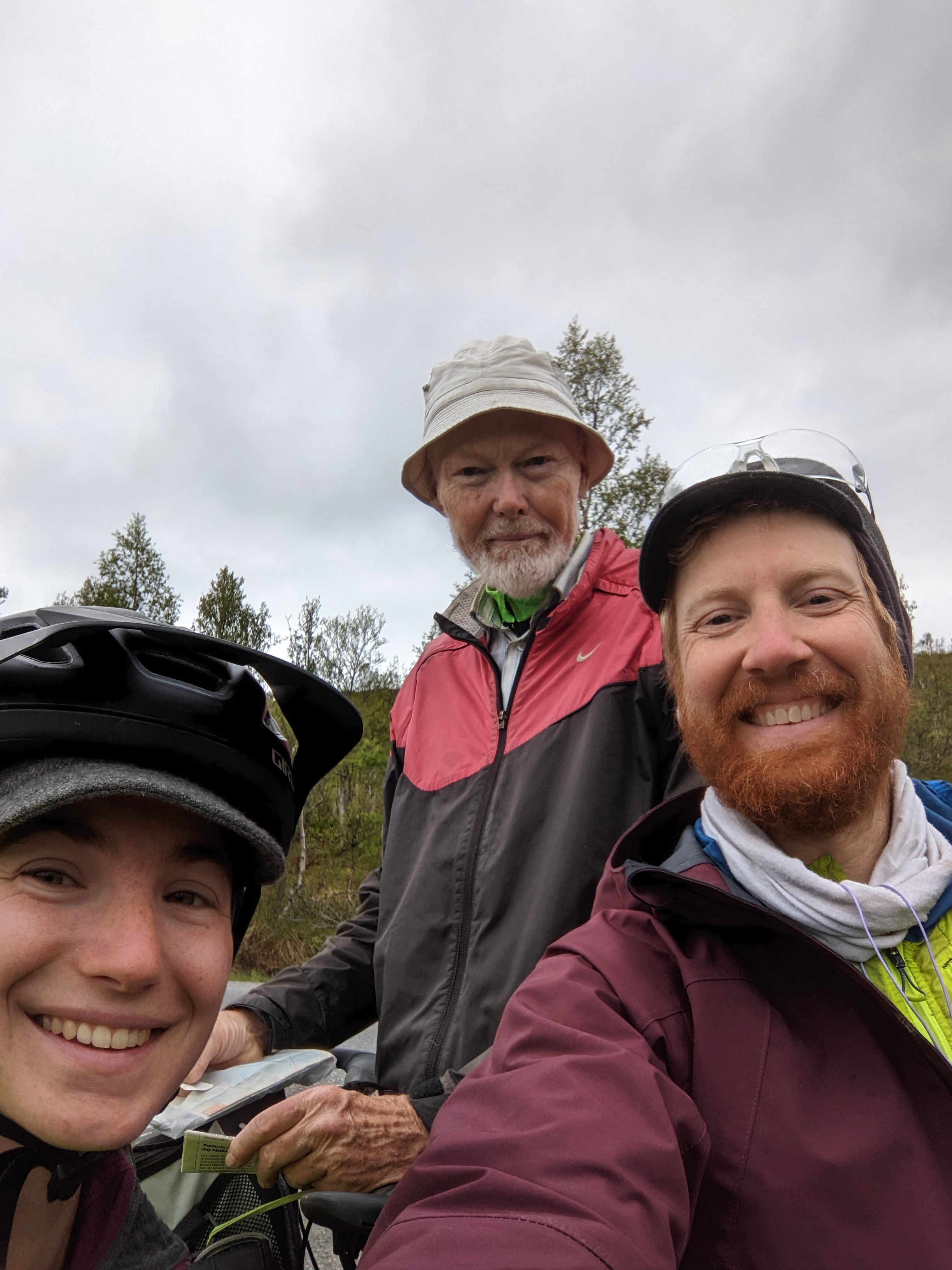
After stashing our luggage at an intersection we’d return to, our bikes felt super squirrely. The steering is so twitchy without front panniers, but climbing is just the best ever. We shot up the first pass (an 8% grade) at nearly the pace we keep on a normal day of touring.
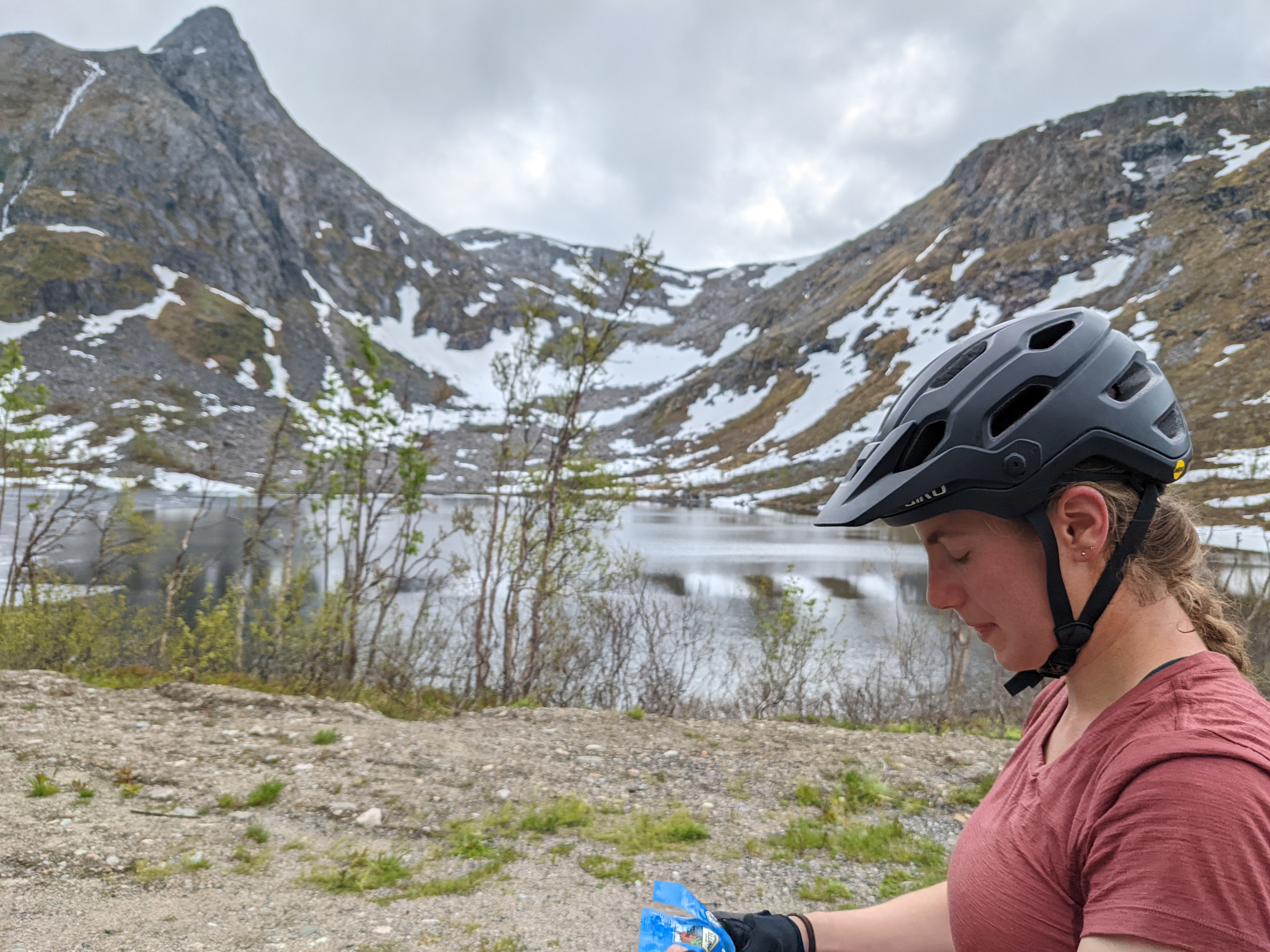
Over the pass, through a tunnel, and down to the fjord below - the climbs set the rhythm of our day, and that rhythm was mostly lazy. We were both a bit tired from the recent pace of the trip, and there was so much to take in.
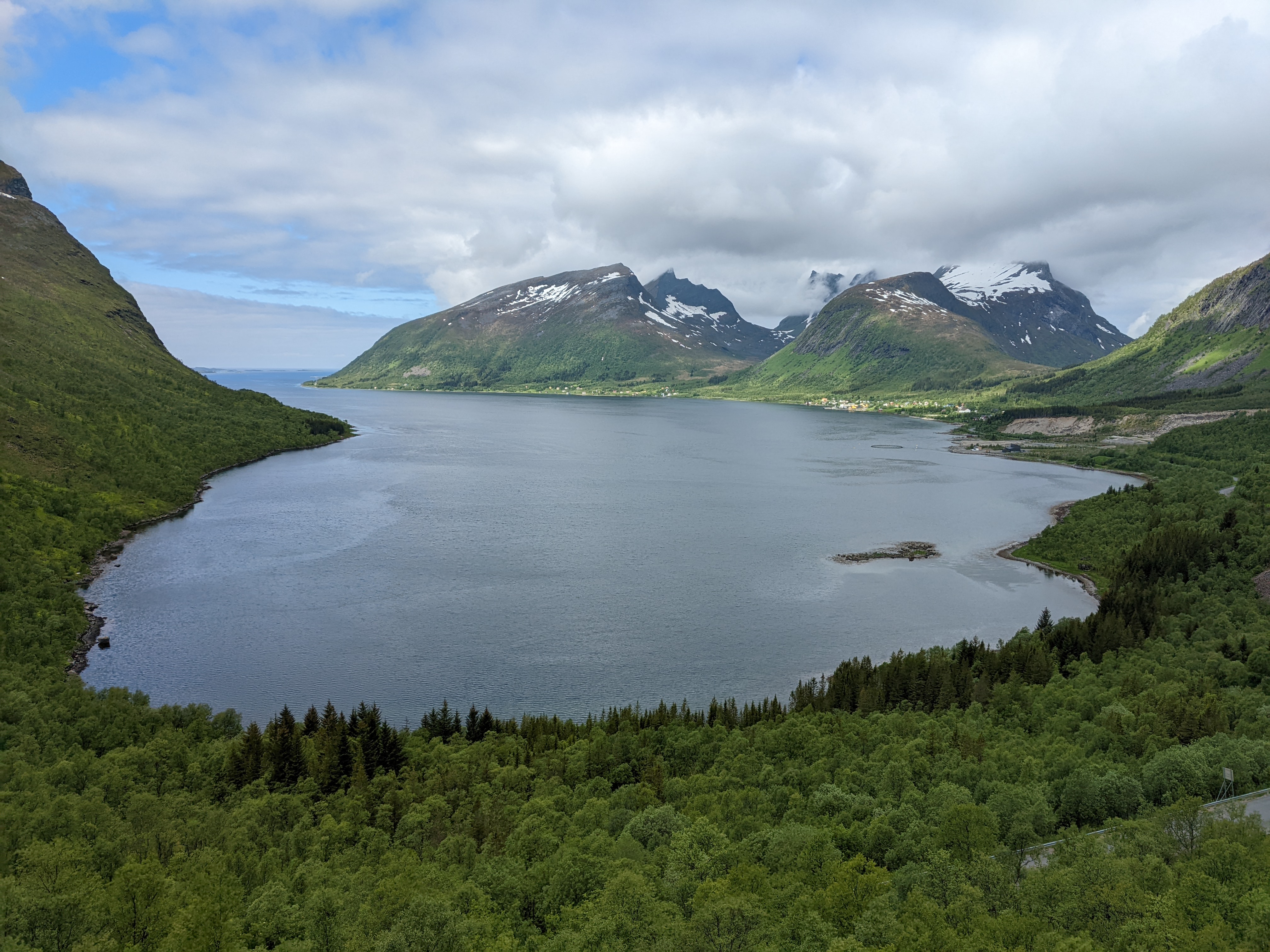
We found limpet shells (with barnacles on them!), sea urchin tests, and the orange and blue ruins of some crabby-guy with the thickest claws ever.
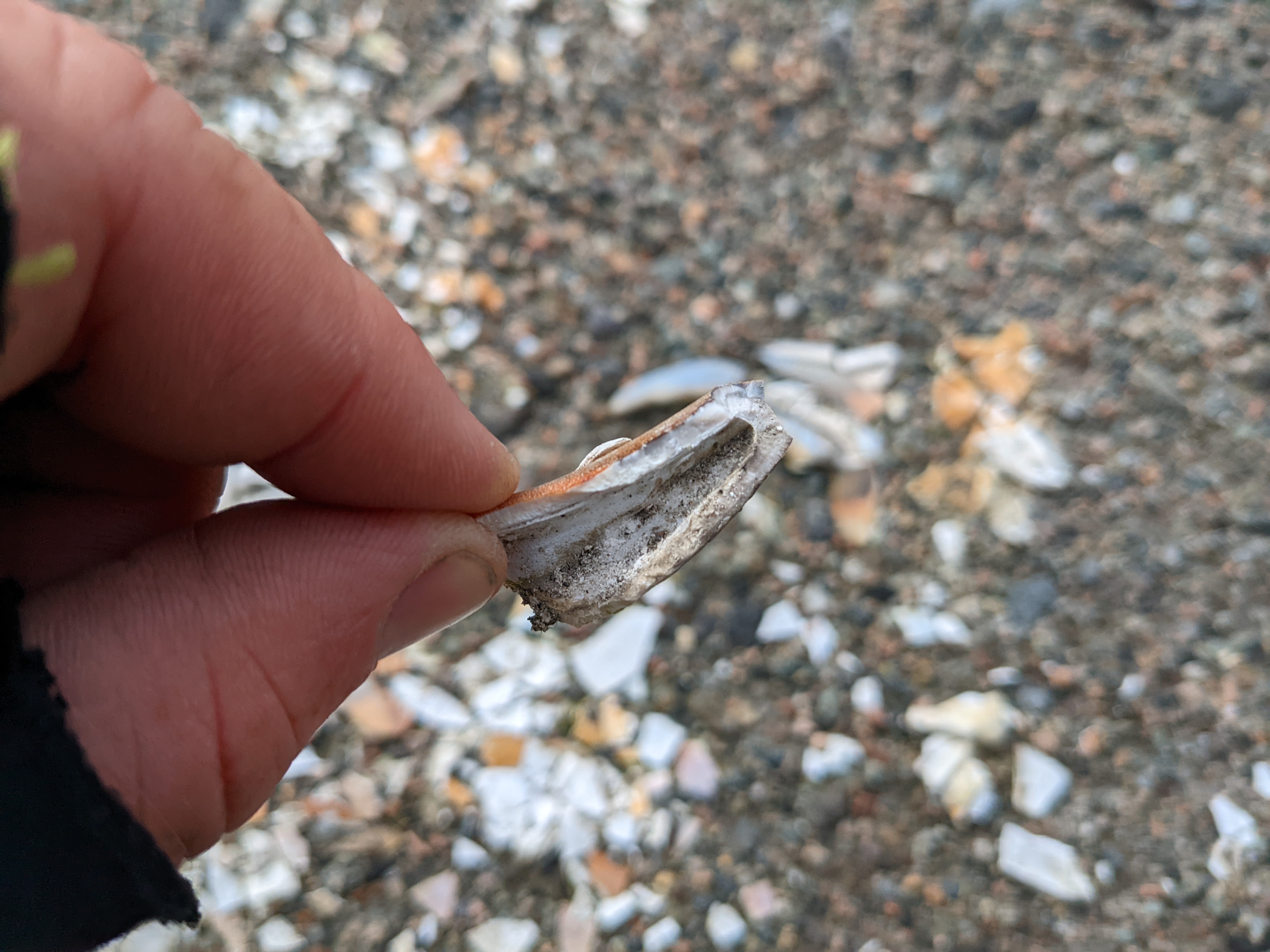
This was an unprecedented amount of evidence that invertebrate life might exist here, but the cloud cover and cool temperatures kept me out of the water. Plus, I forgot to pack my goggles for our short tour - such an amateur mistake while riding with contact lenses in.
![green grassy meadow sticking out into the fjord, across from deep glacial valley]](/assets/images/senja/lunch-spot.jpg)
The sky cleared as the day went on, and we had a long, sweet lunch in the sun at the water’s edge. The view across the water was seabirds feeding below peaks and glacial valleys. The tide came in slowly, and it, or we, woke a duck that had been sleeping behind a rock a few paces away from us, sending it off like a shot away from the humans. The meadow behind us was tall grass and wild carrot and something like dogwood. The sun was so warm, and we nearly didn’t motivate to finish the ride northeast.
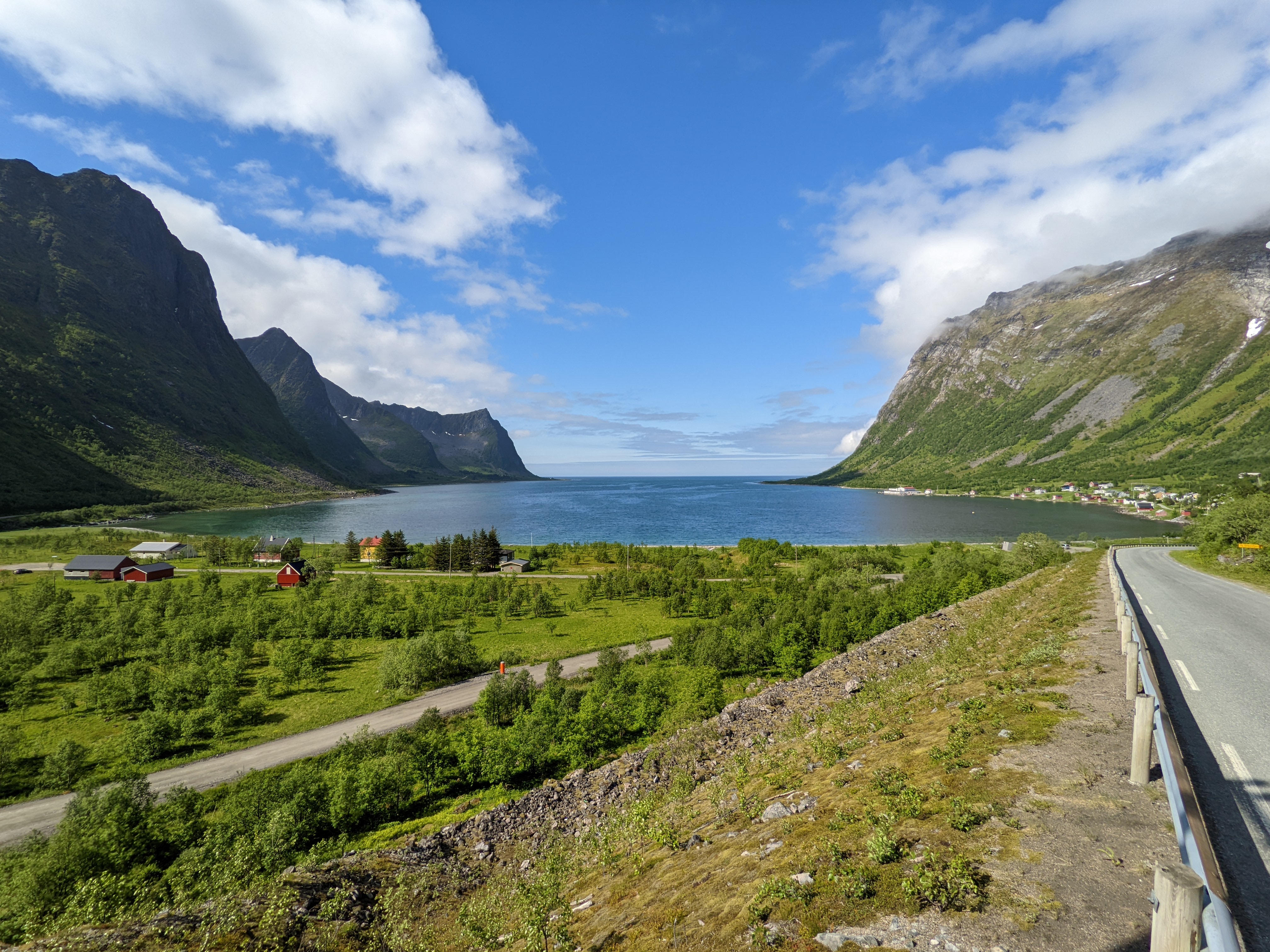
The next fjord over made clear why so many people love this place. Steinfjord, a cozy little town, lies nestled between rock and water, in a bright, open fjord bottom.

The mountains begin getting sharper here, and continue doing so as you head north. The rock shines hard and bright in the sun. The water is crystal, and the greens are so brilliantly green. I’d live here in a heartbeat, and damn the long winter.

The 862 runs passes Tungenesset shortly north of Steinfjord. For better or worse, I’m growing a bit skeptical of the highway pullouts built up with architecturally-interesting bathrooms and packed with camper vans. There’s usually a better view just around the corner. Tungeneset, though, is spectacular. White stone, weird algae, and views out past the end of the world.

We floated on, past the white-sand Ersfjordstranda, which would be perfect for a beach party on any summer day that wasn’t in Norway.

On the road past Senjahopen, we had a brief conversation with another bike tourist who seemed to have organized his trip around public toilets. (and they are interesting)

We ducked the gate that had been lowered to protect us from the closed tunnel, and pedaled to the viewpoint looking across at Segla, the wild, sail-shaped mountain people love to visit here. Maybe next time we’ll get a chance to climb it. The sheer drop from the mountain’s shoulder to the sea is imposing. The recycled-tire planters give things an unusual eastern-european feel that is only enhanced by the clouds forming again across the sky.
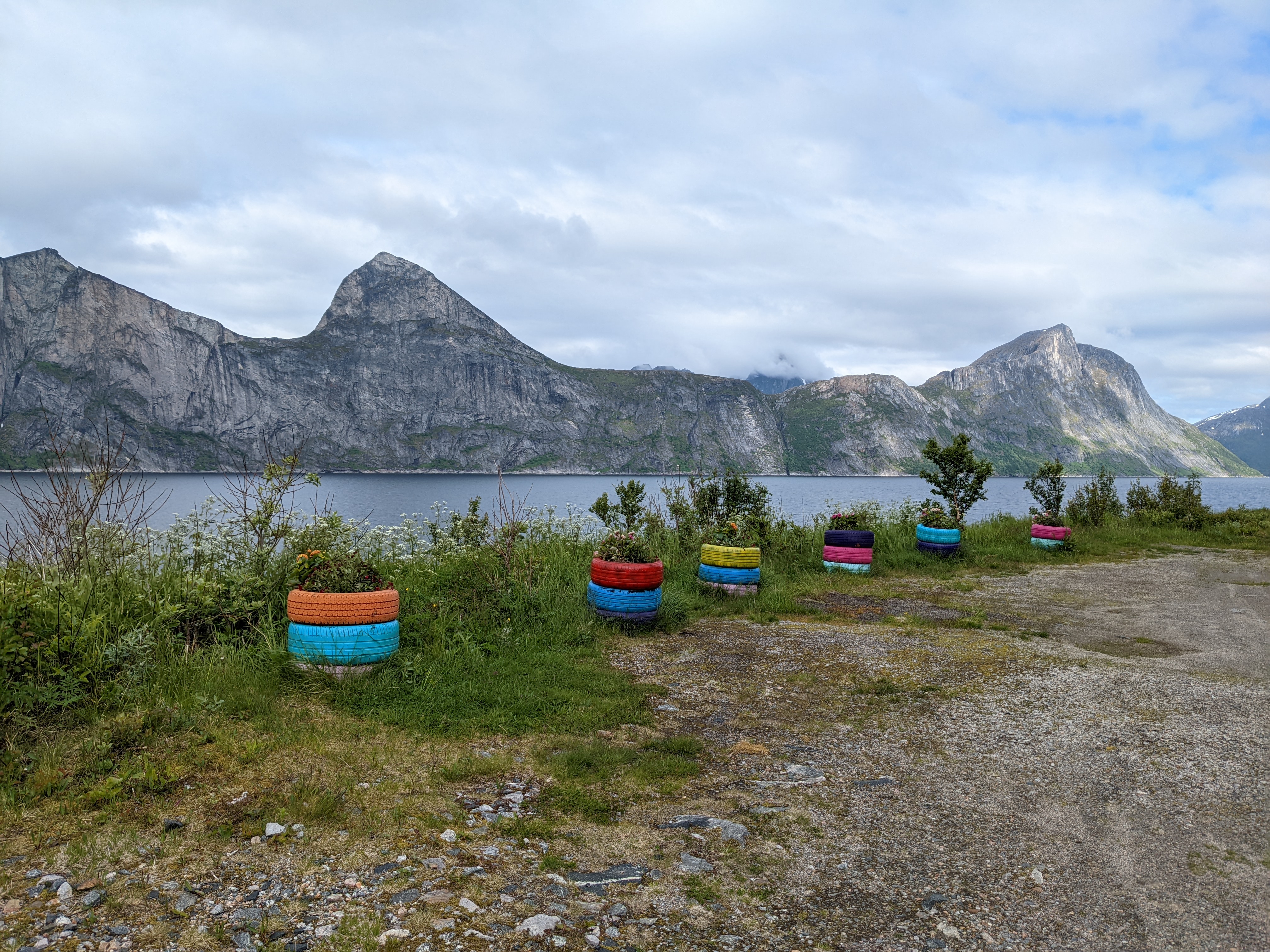
Back to camp
Our tourist day winding down, it was time to get some food into us. Lest you imagine the ride back as just another time-warp through some tunnels, let me disabuse you of the notion.

Sometimes changes in direction provide new perspectives on things you’ve considered before.
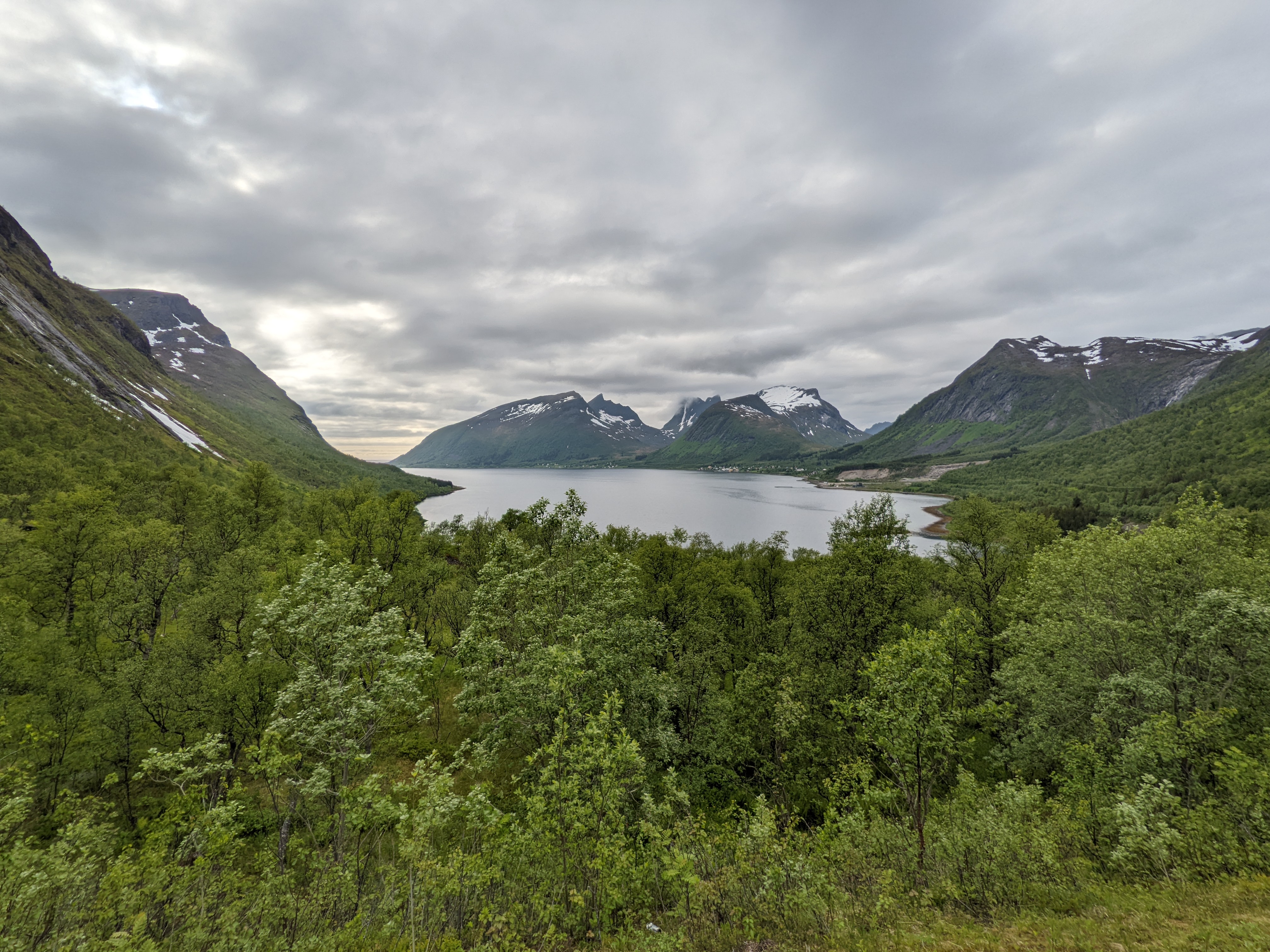
Sometimes, rocks and water and wild, wild plant life are just pretty.
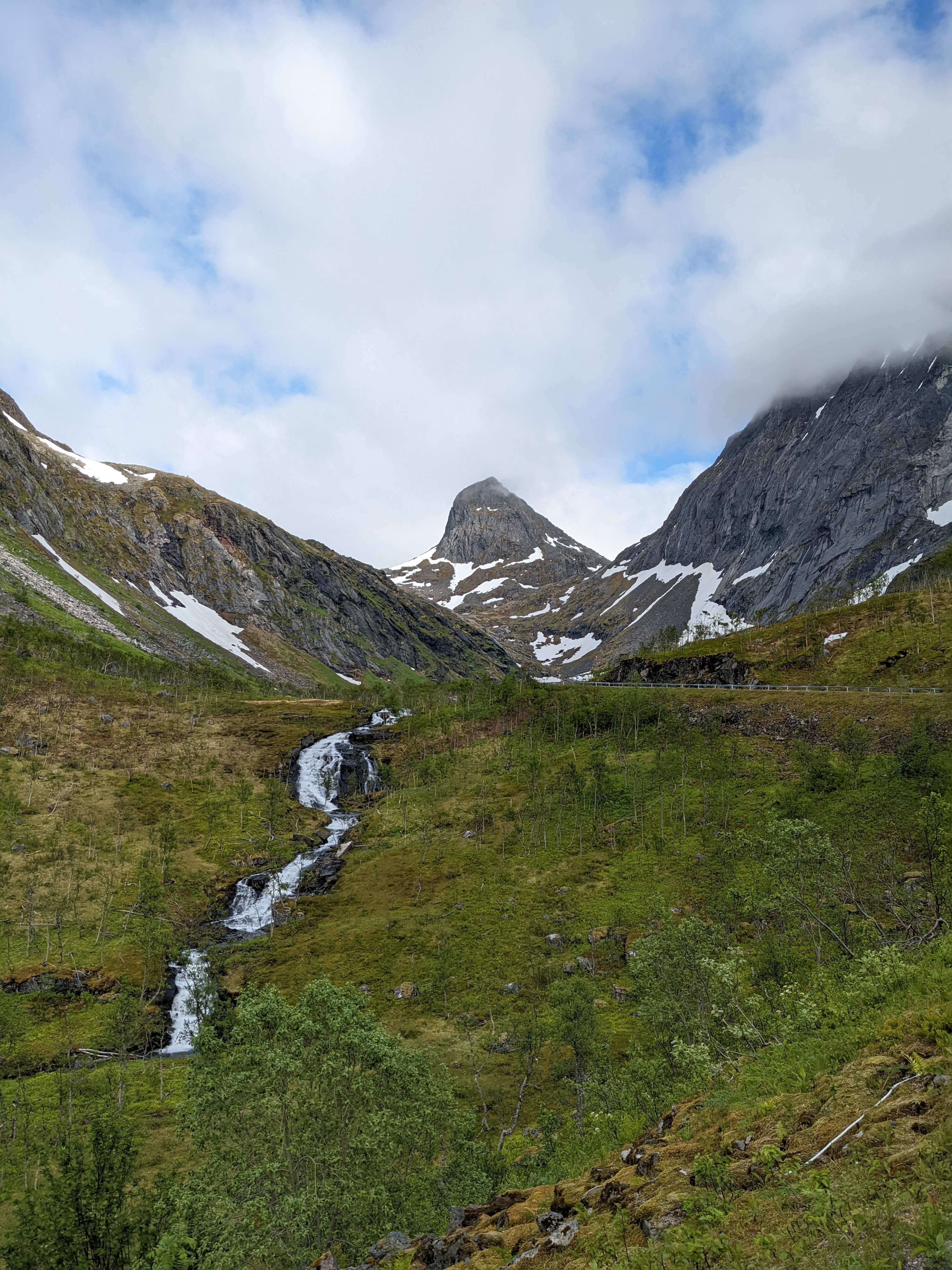
Our day ended on a sweet, sloping meadow above yet another fjord. The birch trees above us kept the meadow dry enough, and nettles grew here and there in the tall grass down to the water.
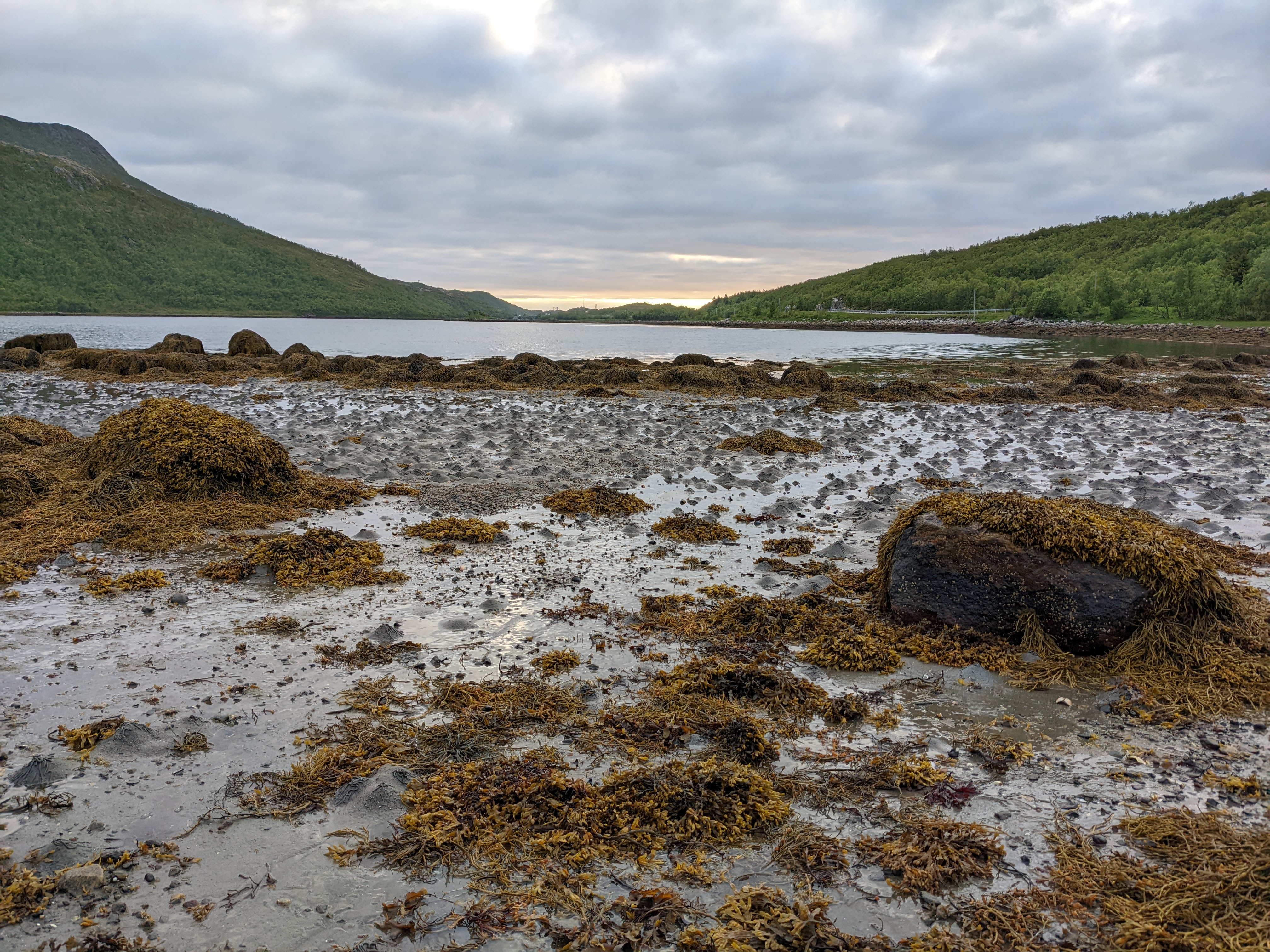
Wandering to the ferry (and trolls)
We’re heading to Vesterålen today, so we got an earlyish start to catch the ferry with appropriate time for tourist ventures. The famous Senja Troll burned down a few years ago, but the location still has an admirable collection of smaller specimens.
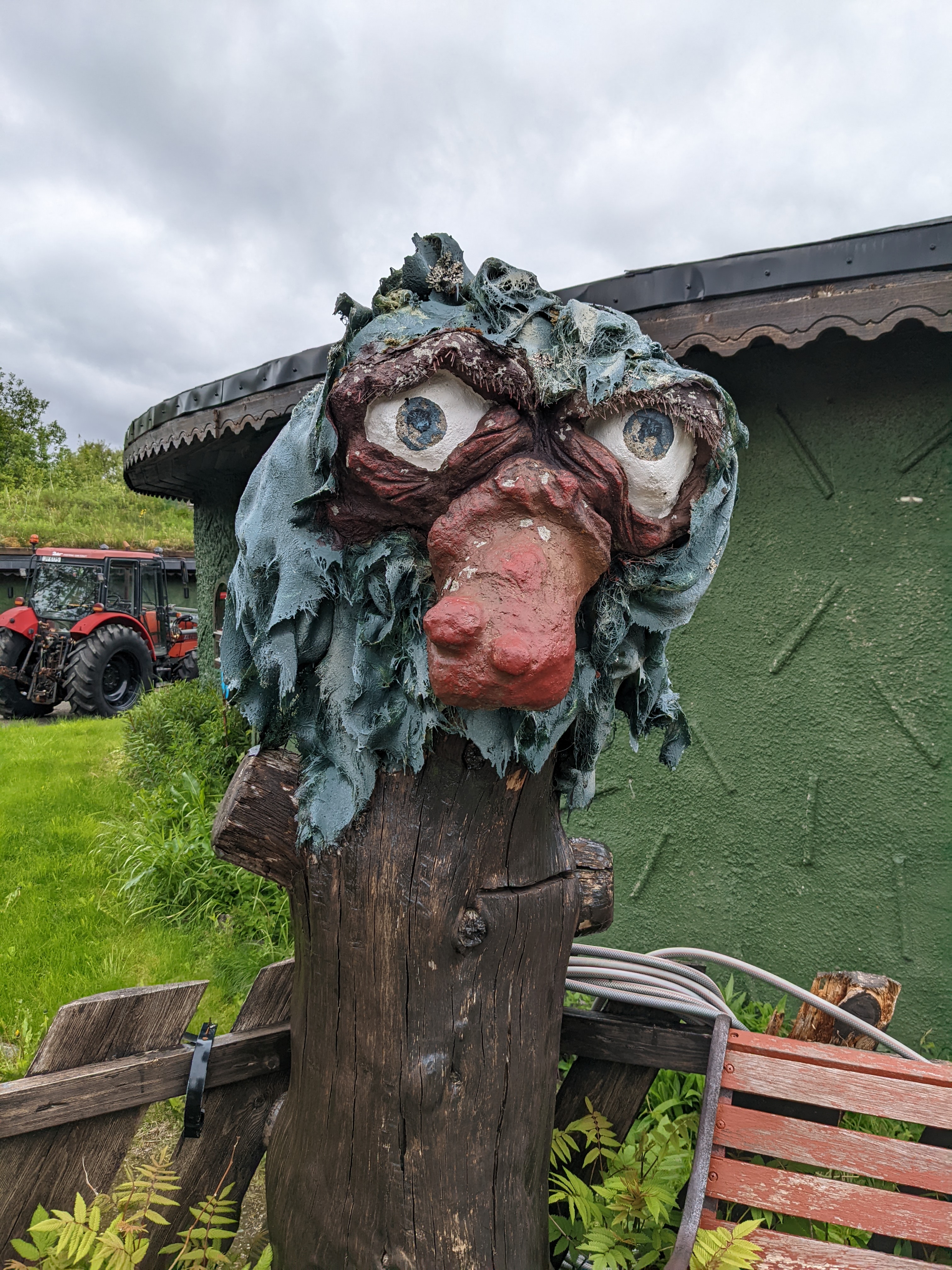
They are generally not dangerous, but the proprietors might consider feeding them more regularly.
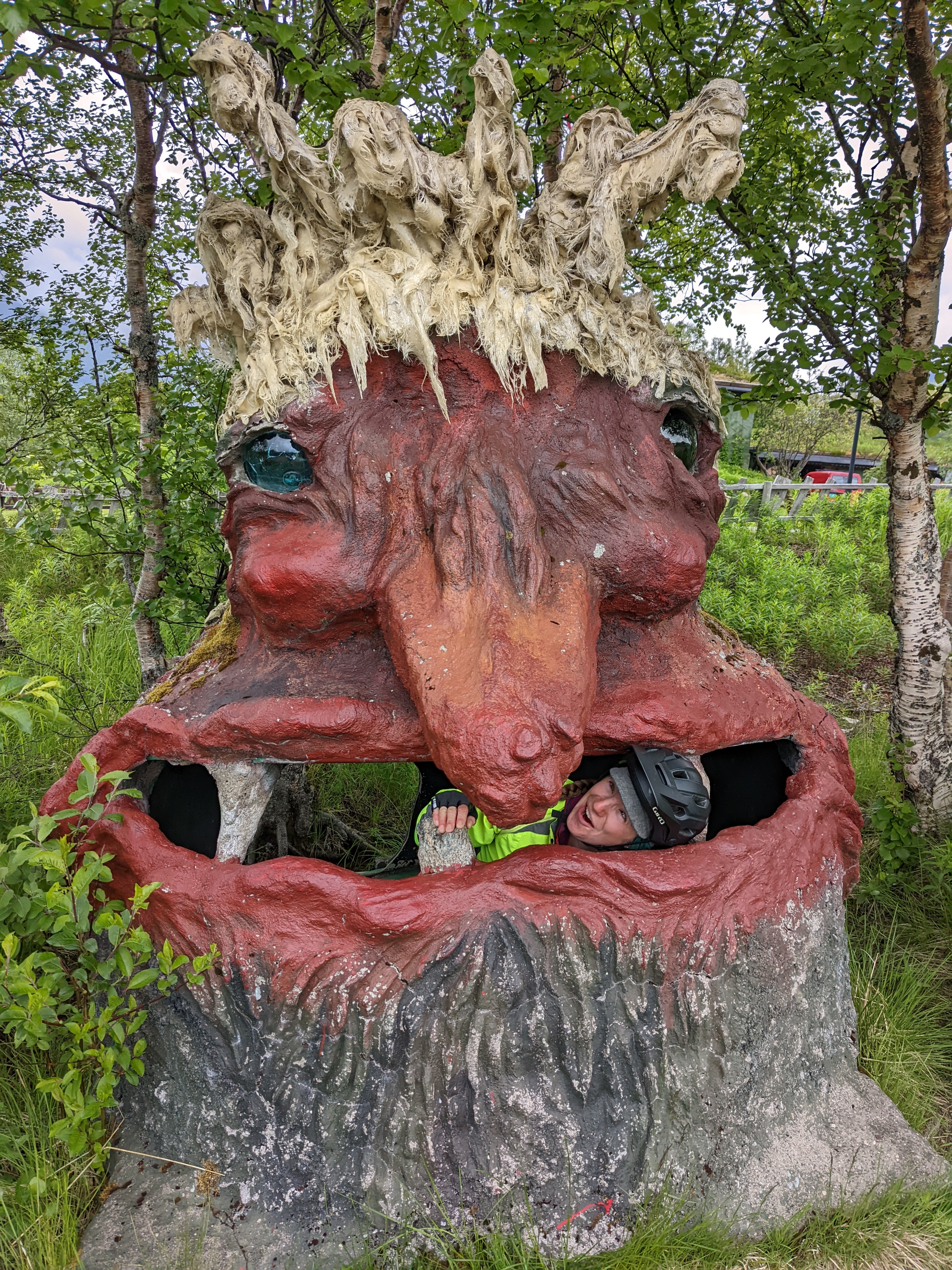
Speaking of proprietors, the place is for sale if you’re in the market.

The ride around to the ferry took us past Hamn i Senja, a lovely-looking but spendy lodging, built on a bay of tiny islets and brilliant blue-green water. The Robinson Crusoe-looking bridge out to the next islet over is almost too appealing. Steep stone ridges still shape the land here. Small homes, barns, and shelter frames (or fish-drying racks?) litter the pretty green spaces in between.

New friends
COOL BUGS!
A proper beetle and some big water beetles zooming around in the ponds
Plus, our first dragonfly

Adorable sedges
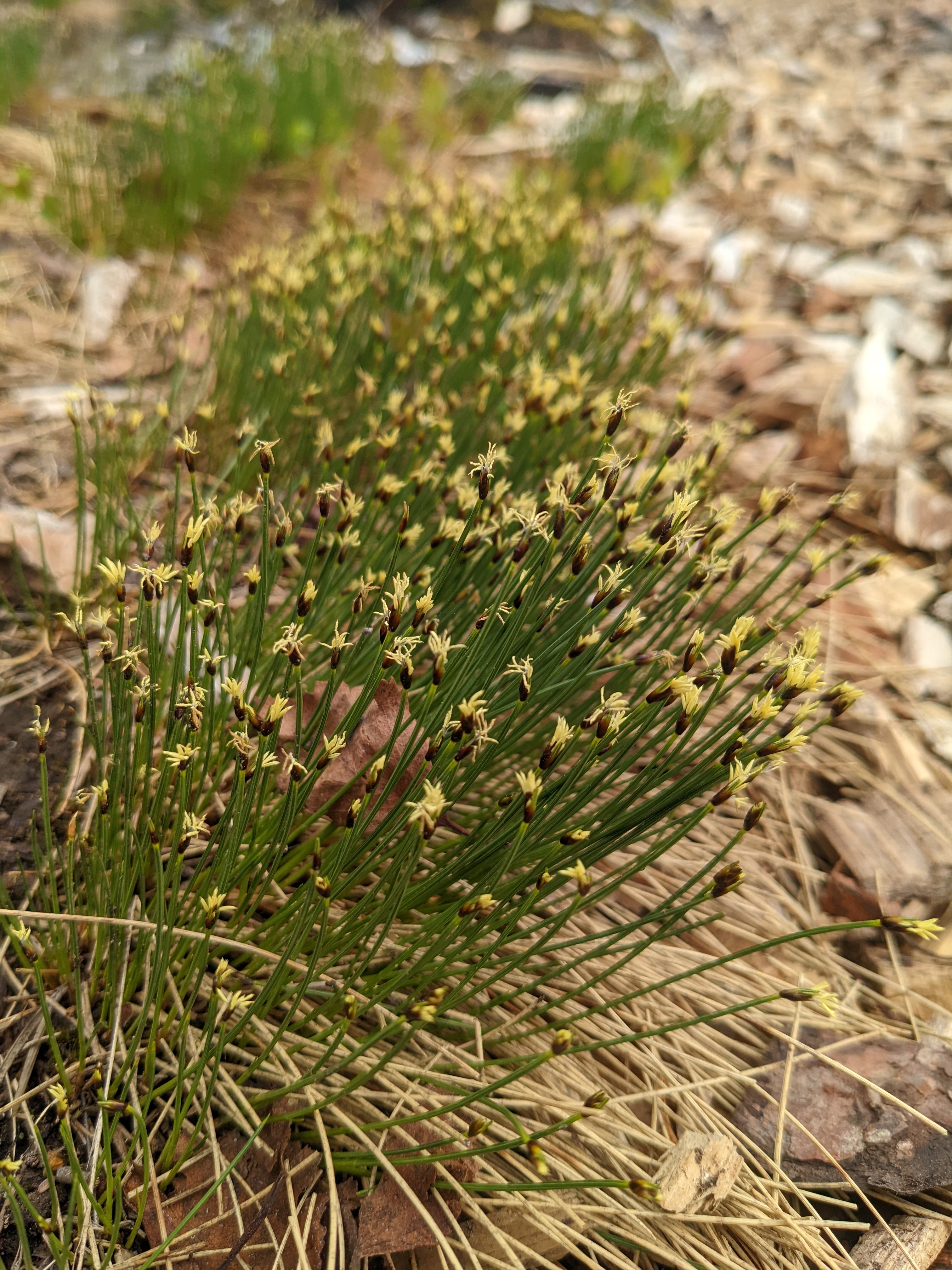
These weird water plants!
